You rely on your website to generate business in some form or fashion. Depending on the type of website you have, that may be through generating new leads, raising your profile and perceived authority, or processing sales. If your website isn't accomplishing any of this, it's time to take a look at your business strategy and incorporate steps to optimize your site's conversion rates.
When you're looking to convert more of your visitors into customers, starting with your web design can give you some easy wins. If customers are turned off by your website design, that can have a significant impact on conversion. By focusing on website design, businesses can see lots of benefits from conversion, especially in the amount of business they get from visitors landing on their website.

First off, let's take a second to define some key terms.
"Conversions" are when visitors take a desired action on your website, such as filling out a contact form, downloading a lead-generation PDF, or buying a product.
"Conversion rate" is a mathematical formula that can tell you the percentage of users that are taking a specific, desired action on your website. To calculate your website's conversion rate, divide the number of users that take the action you want to measure by the number of total website visitors.
"Conversion rate optimization" refers to the systematic practice of increasing the number of website visitors who take a specific, desired action on your website.
The more users that take an action on your website (that you want them to take), the more leads you'll find and the more business you will get. Converting visitors into customers is usually the number one reason our clients are looking for a new website. Focusing on improving your conversion rate is a great way to improve it without having to invest in a complete website redesign.
You don't have to be a conversion expert in order to improve your website's conversion rate, especially if you are only looking to move the needle a little bit. (We would definitely recommend talking to us, however, if your conversion rate is significantly lower than you want or need it to be.)
You can find success with a conversion rate optimization process that just focuses on small tweaks you can make to elements of your web design.

Negative space is the white space on your website. Increasing the padding around elements and increasing the margins of your page will give each element its own breathing space and allows visitors to take each element in before moving on to the next. Websites without a lot of negative space risk overwhelming their visitors which will cause them to click away faster.

Visitors to your website don't know what you want them to do once they get there. Writing specific, clear, and concise calls-to-action (CTA) will let those visitors know exactly what they need to do to become customers. These CTAs should line up with the actions you want your users to take.
For example, if you want your customers to download a PDF, adding an action button that says "Download now!" is a great way to show people what action to take. Same thing if you want them to make a purchase. Adding an "Add to Cart" or "Click here to purchase" button will significantly increase the number of users who take that action.
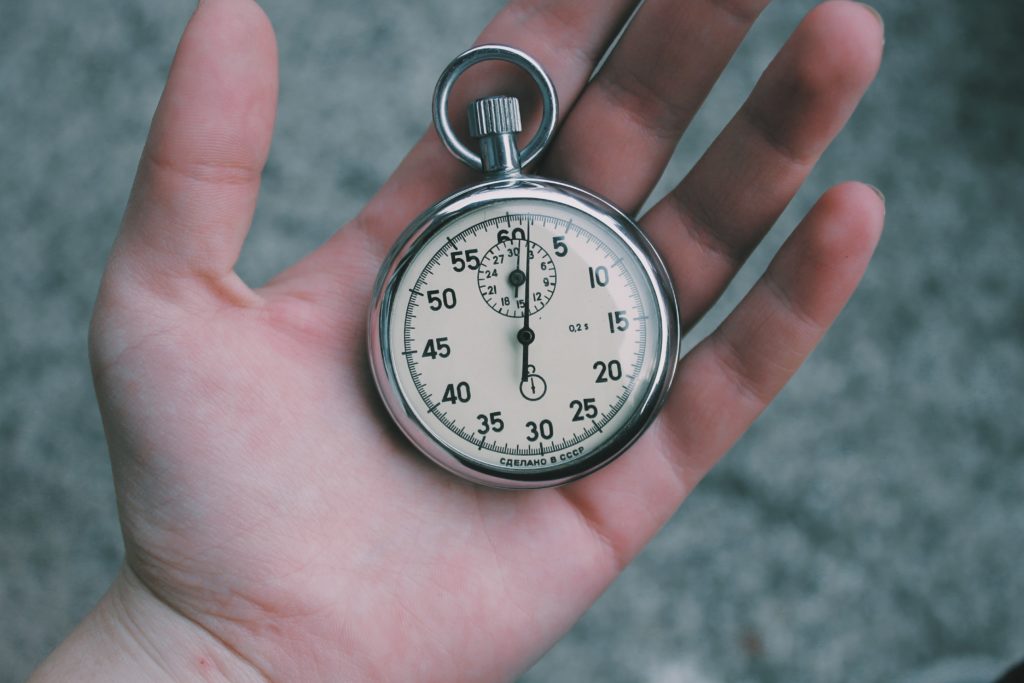
Speed is key when you want users to stick around. Not only does website loading speed impact your search rankings according to Google's algorithm, but it also impacts users' first impression of your site and whether they stick around or not.
According to recent studies, the average load time for a website is 3.21 seconds on a laptop or desktop. When the page load speed increases from one second to five, the probability of a user "bouncing" off increases 90%. A load time delay of even a second can reduce your conversions by 7%.
Customers landing on your page want the information fast. When you ensure that your website loads fast, you will see a corresponding increase in conversion rate optimization.

Getting your visitors to take the actions you want them to take is easier when they don't have a million options to choose from. By limiting the number of choices your customers are faced with when they hit your site, you are closer to guaranteeing success with your conversion rate optimization process. While you don't want to take away all of the choices your visitors see, giving them fewer options gives them a clearer path to conversion.

The Rule of Thirds is usually thought of as a photography principle but it can be applied to web design with great success as well.
To apply the Rule of Thirds to your website, first, divide your site into thirds horizontally and then divide it into thirds vertically. This will give you a grid with nine equal squares and four intersections. The four intersections are where your visitors' eyes will be drawn naturally.
When you put important images, calls to action, or information at these intersections, it can create a more impactful design that gets your visitors to focus more on the important elements. This amount of focus can boost your conversions.

Customers landing on your site through their mobile devices want to have the same experience they would have landing on your site via their desktop. Focusing on responsive design can have a huge impact on your conversion rate.
More and more, consumers are searching primarily through their mobile devices and are more likely to recommend your business if you have a solid mobile website. Google is also incorporating responsive design into the factors they use to determine search rankings. So responsive design is useful for both conversion rate and search engine optimization.

Even if the face is unfamiliar to your visitors, having pictures of people on your site will elicit emotional responses that can influence how they feel about your product, service, or call to action. Human faces can also show people where to look.
For example, if you have a picture of someone looking at your headline or call to action, visitors landing on your site will also feel compelled to look at that same element.

The biggest factor in whether a website visitor completes the action you want them to and impacts your conversion rate is whether they can comprehend what you want them to do. If you are using a font that is hard for visitors to read, they're not going to stick around long enough to complete an action.
Additionally, your website copy needs to compel them to take that action by showing them what will happen if they don't, eliciting emotional responses that move them to act, and persuading them of the benefits they will receive after taking the action.
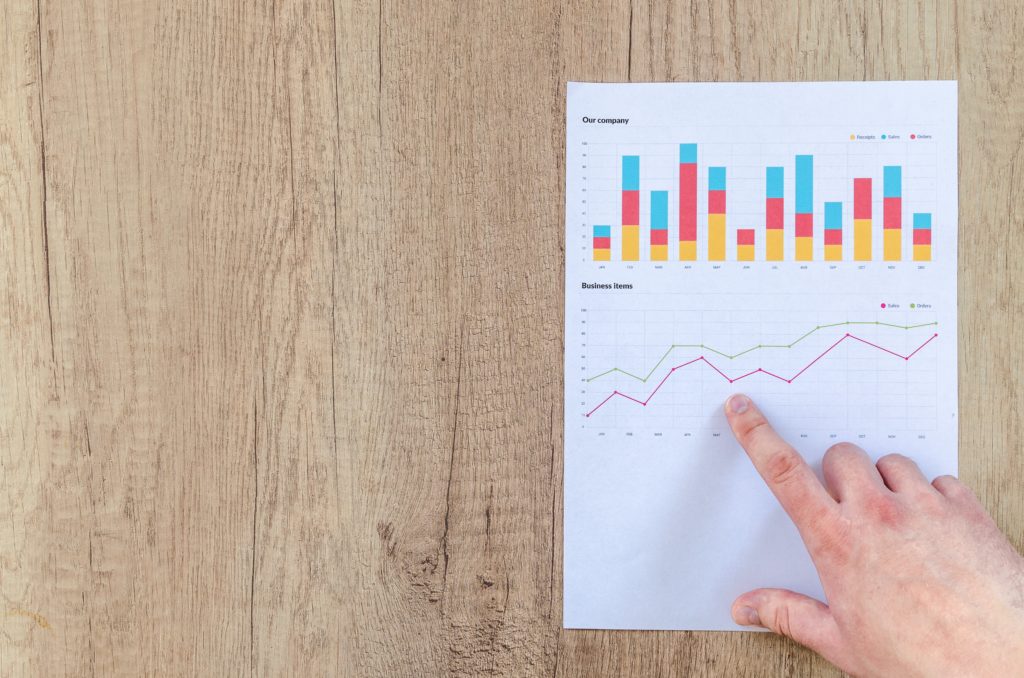
Your website can only convert so many visitors if you're not actually offering them things they want or need or you don't actually know how they're interacting with your website. That's where data comes in.
After you've implemented some of these best practices, you can begin to measure user behavior to continue to boost your conversion rates. The best place to begin is with heat maps that can show you how your visitors are consuming your content.
Next, you can start asking your existing customers what they like, what they want more of, what problems they need help solving, and what isn't cutting it in regards to your products or services. This can give you and your business strategy even more insight into your audience and can help you develop services you may not even have known people need.
Taking steps to optimize your site's conversion rate can have a huge positive impact on your business goals. Adding this process into your business strategy is a great way to begin to see more benefits from conversion.
If you need help, have questions, or need an unbiased eye in looking at your website to improve your conversion rate, don't hesitate to give us a call. We'd be more than happy to take a look at your site and help you improve your conversion rate.
—
Thrive Design is a customer-centric web design company from Seattle. Contact us today to find out how we can elevate your business online! Find us on Clutch, UpCity, LinkedIn, Facebook, and Twitter.
Color can signal many things. Blue can make people feel reassured. Green can make people feel calm. Purple shows creativity. Gray shows sophistication. Orange, red, and yellow convey energy and warmth.
Color is a tool you can use to start building your brand's image in a website visitor's mind before they read even a single word of your copy. Choosing the right colors and color scheme for your website gives you the opportunity to hook your customers from the moment the screen finishes loading.
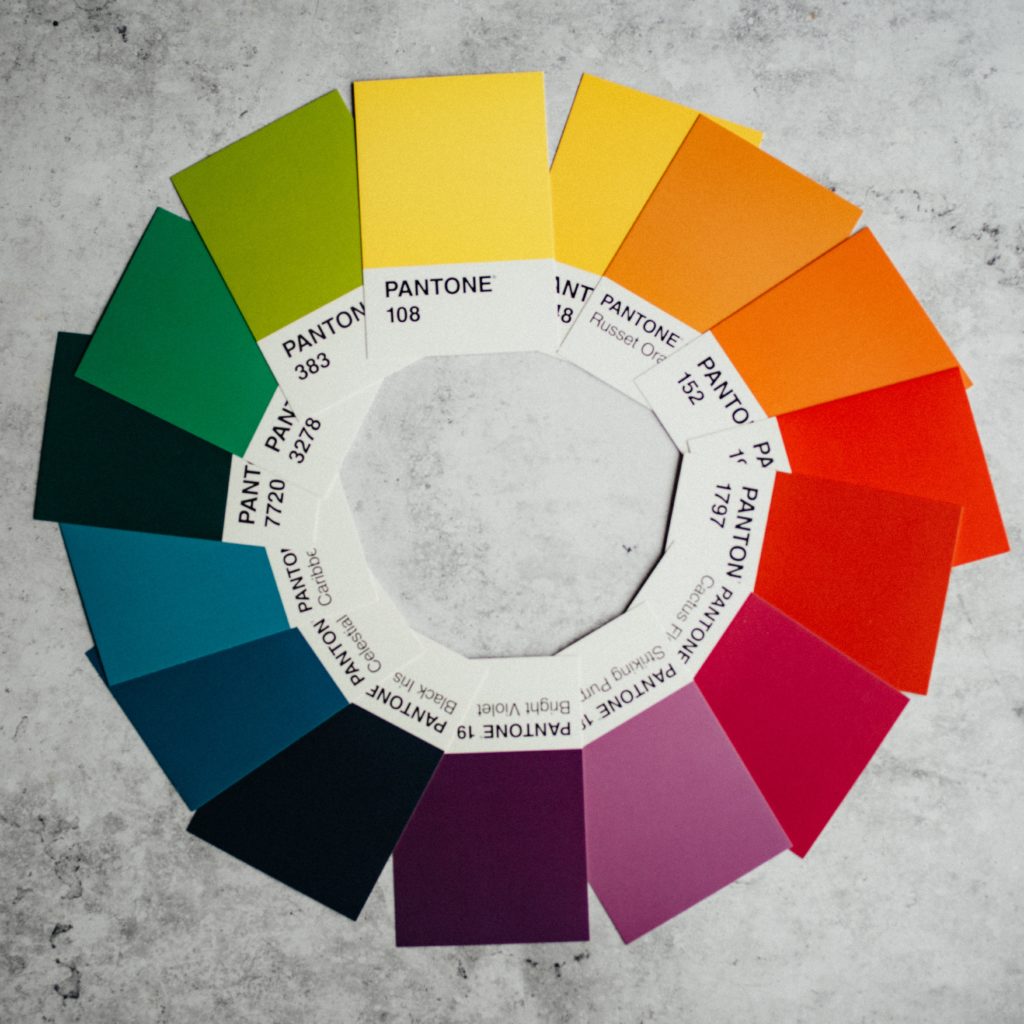
The collection of colors you choose for your website design is known as a "color scheme." These color choices can also be known as a "color palette." While color schemes and color palettes include more than one color, there is no cap to the number of colors that can be included.
(However, this is definitely a field where less is usually more. Potential customers can easily be overwhelmed by too many colors and will quickly move on to your competitors if they do not like the look of your website.)
The great thing about the colors you choose is that they can be used repeatedly for a variety of elements throughout your site. Not every element has to be a different color. That said, color schemes are usually divided into two sets: primary and secondary.
In this case, the term "primary colors" isn't talking about red, yellow, and blue. It's talking about the main colors that will be used for your site's background colors, logo colors, menu colors, and other dominant page elements. "Secondary colors" refers to the set of colors that are used as accent colors throughout the site.
When creating a color palette for your business website, it's important that it remains consistent across the site. This will help to reinforce your brand personality, something we talk about in our Blueprint for Online Excellence. Using the same colors over and over again helps to create associations and reinforce expectations between your brand and your audience.
What is the first thing you notice when a website finishes loading? Odds are it isn't the copy because, as powerful as copy is, it takes more than a millisecond for our brains to process the words we read. The first thing you notice when a website loads is color.
Studies have shown over and over that color has a major impact on how we feel and can influence how we think about a particular product, company, or brand.
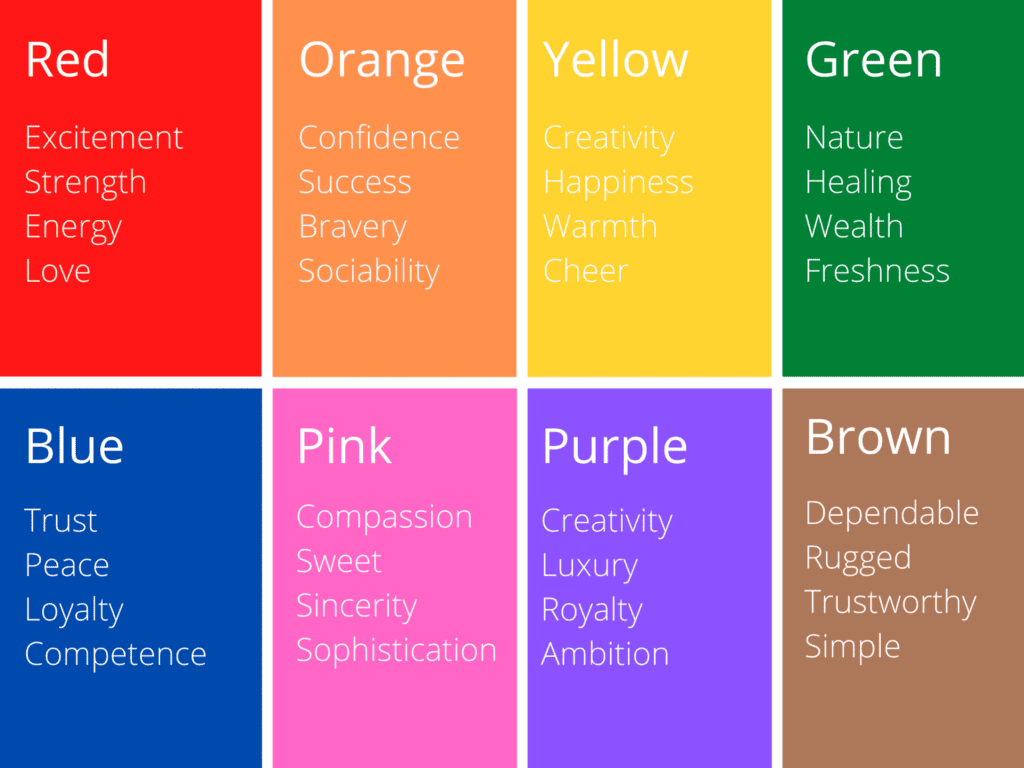
But what does this mean for your website designs?
Research from the University of Winnipeg found two important things related to website color schemes:
Understanding color psychology and how your color palette impacts your visitors can lead to better website designs and visitors spending more time on your page leading to more leads.
Simple color schemes are more popular than ever. With more and more people using their mobile devices for web browsing, keeping colors simple but impactful is the best bet for resonating with your target audience.
Simple neutrals with bright text
Gray is seen as sophisticated. Muted earth tones are seen as grounded and calm. But if your palette is limited to those colors, some people can see it as boring. Adding in a bright, primary color as an accent color in your text is a way to direct attention to important elements while not overwhelming them with color.
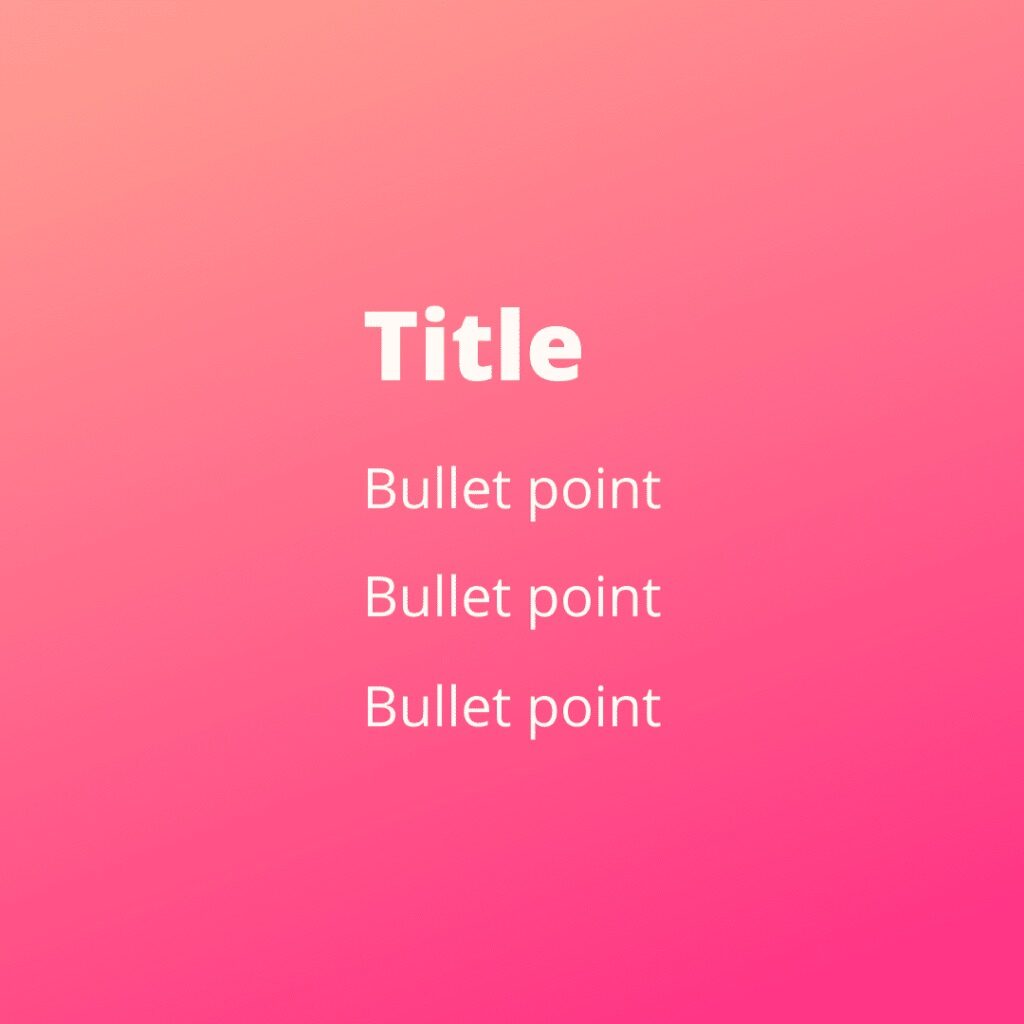
Color gradients with white text
Not every palette has to have multiple colors. Monochromatic color schemes can be just as powerful, especially if you use color gradients. Blending one main color creates a dynamic background that allows your text to jump off the page. It creates more texture in the background and makes your website much more interesting to look at for visitors.

Throwback tones
Everything old is new again, at least when it comes to popular color palettes. Designs that incorporate the neons from the '80s, rusty earth tones from the '70s, or the pop-art-inspired colors of the '90s are resonating with more people than ever before, especially if they are done in a modern way.
Adding in modern elements like color gradients or fading the colors to pastels is a great way to update these palettes for a more modern audience.

Muted tones with a bold color accent
Website visitors respond well to designs that incorporate muted tones and neutrals. They're easy on the eyes and make it easy to read any text. But designers can also effectively use a bright and bold primary color in these color schemes to draw attention to important elements like buy now buttons or contact forms.

Shades of a primary color accented by its complement
Using more than one shade of your palette's primary color is a great way to get a lot of mileage out of one color that may have meaning to your business. When you use a complementary color, you get a great contrast in your designs that draws the eye and looks great.
So how do you choose what colors you or your designers should use in your website designs? Not to sound glib, but there are just two steps.
1. Choose your primary colors.
The primary or dominant color in your website color palette is the anchor for your brand and should evoke the emotions you want your customers to associate with your brand. If you've already made a logo, the color that stands out the most should be the primary color for your website.
If you haven't made a logo yet, see the color psychology graphic above and use it when you think about what you want your customers to associate with your brand.
2. Choose your secondary colors.
This is the part where color theory comes into play. Color theory is what you learned in elementary school art class about how colors relate to one another on the color wheel. Designers use color theory to create designs that resonate with your audience. Here are the four most common color schemes:
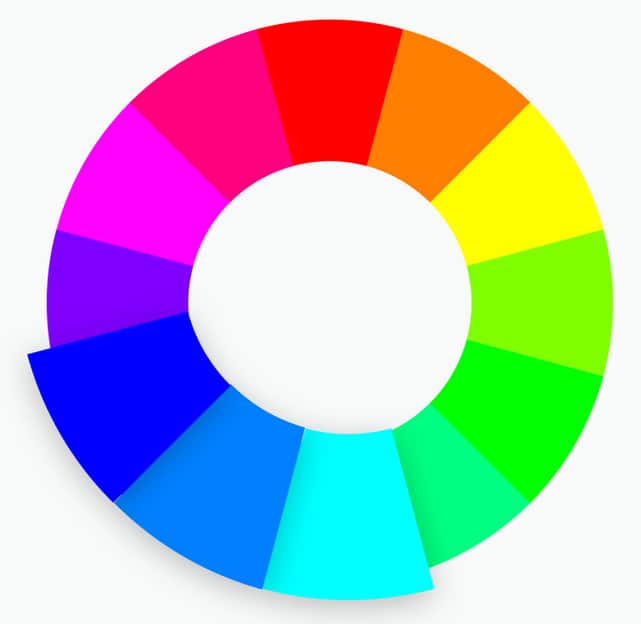
Analogous Color Schemes: Analogous color schemes use colors that are next to each other on the color wheel. These color combinations evoke a sense of harmony but it's important to choose just one shade as a primary color and use the others as accents.
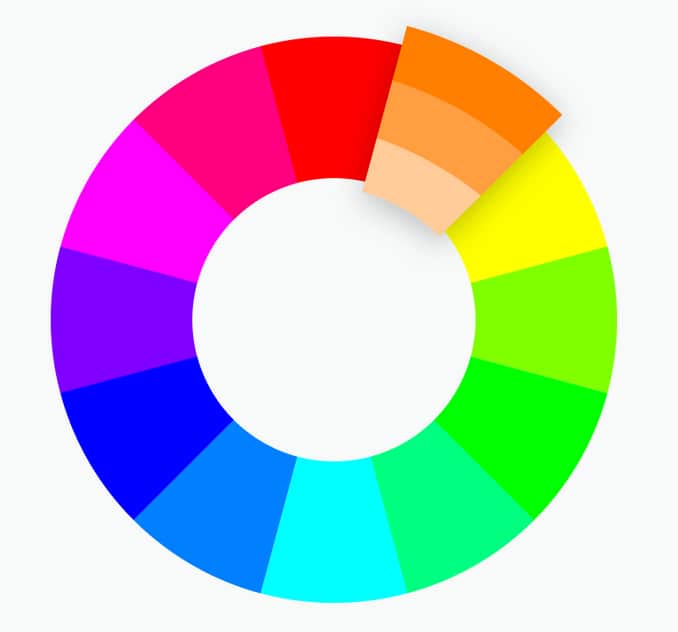
Monochromatic Color Schemes: As mentioned before, these color schemes only use one color or shades of one color. Using just one color can make it harder to evoke an emotional response but it does communicate authority and stability.
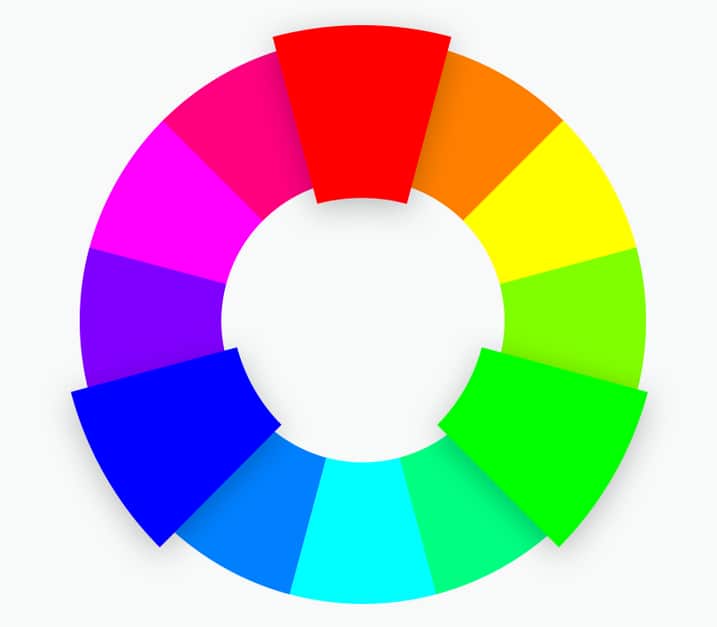
Triadic Color Schemes: Where monochromatic color schemes use one color, triadic color schemes use three that are evenly spaced around the color wheel (think orange, green, and purple). These tend to be bold, dynamic color schemes, even if you use pale or unsaturated versions of the colors.
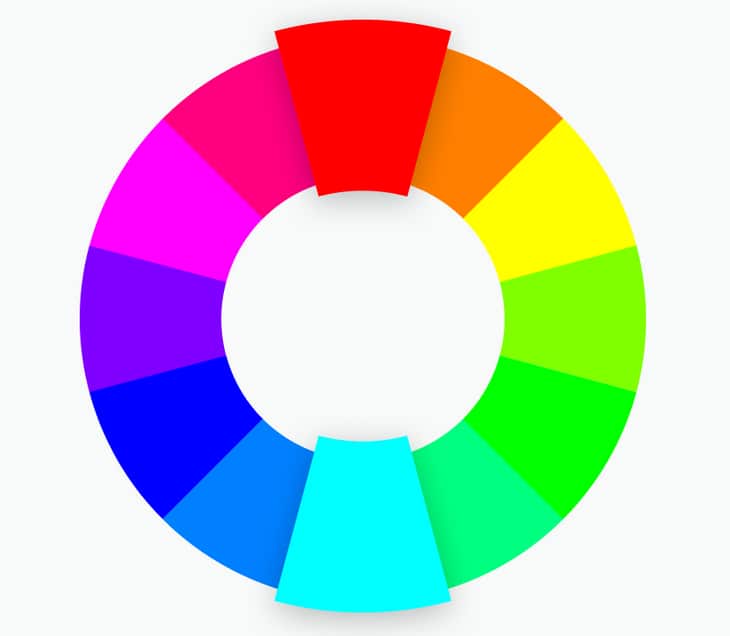
Complementary Color Schemes: Complementary colors are those that are opposite one another on the color wheel. These color combinations can be very attention-grabbing, but also jarring and unpleasant for the viewer. Use them carefully.
If you need a little help narrowing down colors in these general color schemes, Canva has a great tool that can help you find the perfect colors for the kind of color scheme you want.
Your website can say just as much with color as it can with text. It's important to choose your website colors carefully so you end up with beautiful color schemes and not a generic or chaotic mess that turns off your viewers. CanvaPro is a great tool with lots of designer-approved color palettes you can use as-is or just as inspiration. If you need more help, we can work with you to find the exact right color scheme for your brand, your business, and your website.
—
Thrive Design is a customer-centric web design company from Seattle. Contact us today to find out how we can elevate your business online! Find us on Clutch, UpCity, LinkedIn, Facebook, and Twitter.
There are a lot of e-commerce websites out there. In fact, consumers spent 44% more with online retailers in 2020 than they did in 2019. We know that much of this spike has to do with the pandemic-related lockdowns and not being able to shop in brick-and-mortar stores.
We also know that this is a trend that is unlikely to reverse itself as restrictions are lifted and life returns to normal. So how can you ensure that you are getting as much of this more than $800 billion pot?
You make sure that your e-commerce website is great at converting visitors into customers. This doesn't necessarily mean that your website needs to have all the latest features and trends like 360-degree product previews or dynamic product search.
It does mean that you need to have a few solid elements that guarantee customer satisfaction and allow your business to stay relevant and competitive.
Featured Reading: Top 10 Things Every Website Needs
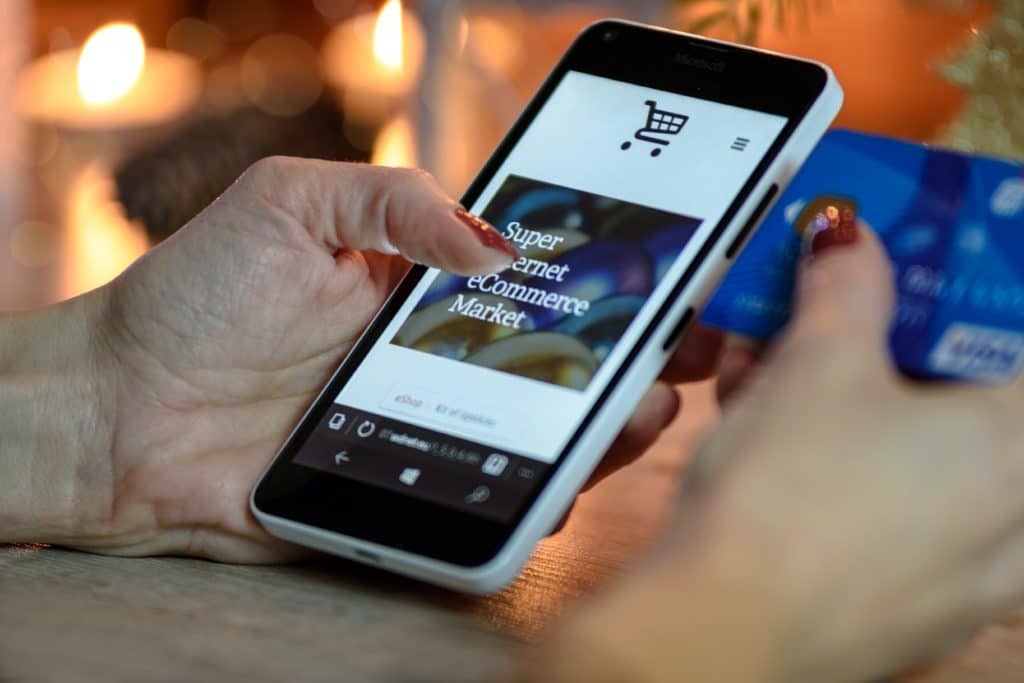
There are a few features that you need to ensure that your e-commerce website design incorporates in order to convert user visits into more sales. Let's dive in.
No matter how familiar visitors are with your business and your products, there will always be something new to them or something they need that they didn't know you sell. That's where a "Related Items" feature is helpful. Just using the phrase "you might like this" can cause a serotonin spike and create a stickiness effect that your e-commerce website is missing.
In addition to showing customers products related to their purchase, you should also be showing them products related to their specific search and/or purchasing history. These recommendations are a great way to increase your sales and improve customer loyalty.

Allowing customers to narrow down their search with product categories, product filtering and sorting, and a strong search feature is the best way to lead customers to exactly what they are looking for. When paired with the product features above, these are powerful tools that allow customers to control their shopping experience.
Sometimes a visitor may stumble across your site before they are ready to make a purchase. You don't want to lose their business just because they cannot save the products they are interested in. By giving them the option to create a wishlist, you allow them to save a list of products that they are interested in for the time when they are ready to buy.
The only way your customers can access features like those above is if they have a way to login to your website. Allowing customers to create accounts gives you the information you need on the backend to make personalized recommendations and gives your customers the ability to come back and see the products they have saved.
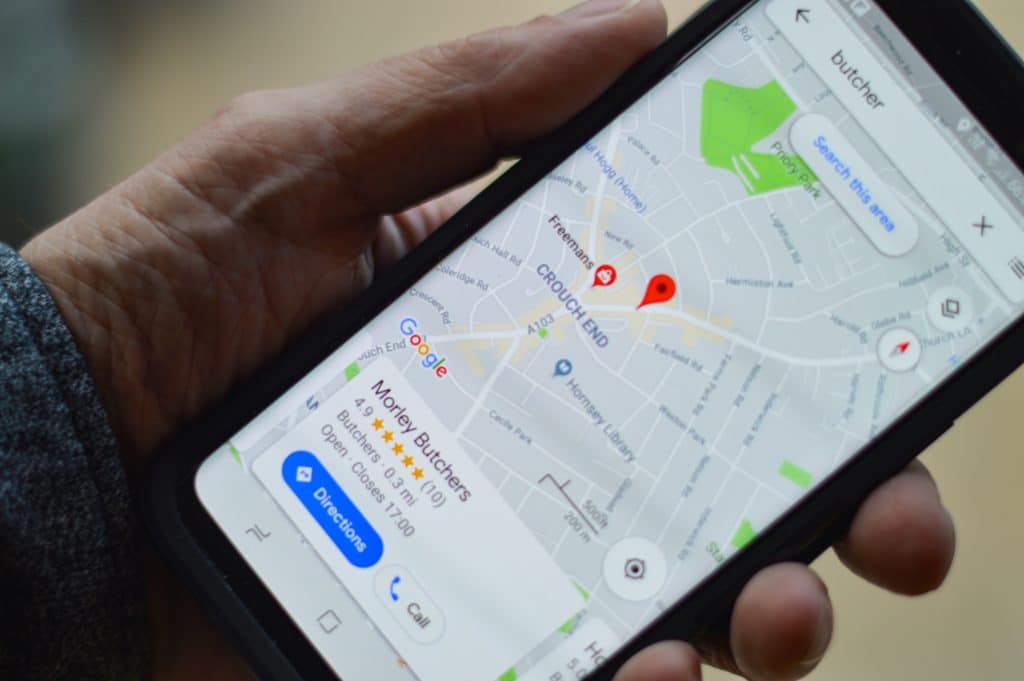
Without being able to interact with your products before buying, potential customers are looking for information about other users' experiences with these items. One of the most powerful tools in your marketing arsenal is positive product reviews. These reviews should be posted prominently on your product description page.
By adding clear and concise calls to action to your site's content will result in an uptick in business. Simple button text like "Add to Cart" or "Shop Now" direct users' action in a positive way. It's important not to assume that users will take the action you want them to take.Don't forget to include calls to action on your homepage as well.
No matter how well designed your e-commerce website is, someone will always have a question. Whether it's about what products are popular, what shipping options are available, whether you have a physical location, or even how to place an order, there are always some questions you know people will ask.An FAQ section can help your customers get the answer they need without a long pause in their shopping experience while they wait for a response from customer service.

One of the first pieces of content a customer will look for when wanting to make a purchase is shipping information. People want to know when they can expect their delivery and how much it's going to cost them. This information should be in a few places on your website such as in the cart and in your FAQs. If shipping is particularly complicated, you may want to consider giving the information its own page.
In addition to a robust FAQ section, it's also important to have an obvious way for customers to contact you directly. Whether it's in the form of clearly presented contact information, an online form, or even a chatbot, when most of your business is taking place online, nothing builds trust like an obvious way for people to get in touch with you.
It's not a small thing to ask customers to input sensitive information like credit card numbers and billing addresses to make a purchase. Especially if you are a small business or you are dealing with a first-time buyer, your potential customers want to know their information is going to be safe. Adding a few trust signals throughout your website, and especially by the "Add to Cart" button will reassure them that their information is safe and encourage them to make the purchase.
Featured Reading: 5 Essentials for Keeping Your WordPress Website Safe

It does not matter what kind of content and amazing products you are offering if potential customers are unable to access that info when they are ready to buy. More and more people are shopping and buying from their phones. In fact, smartphone conversion rates are up 64% over desktop conversion rates.
Did you know, it takes less than 3 seconds for a person to decide if they like your website? So if you want people to stick around and buy your products or service, don't waste those 3 seconds on a slow loading site. In fact, 40% of people surveyed say they instantly leave a site if it takes more than 3 seconds to load.
Website navigation that requires users to actively look for the information they need is a quick way to drive potential customers away from your site. Your site’s navigation should be easy to figure out and should lead them to the information they need to purchase your company’s products and/or services.
eCommerce website design doesn't have to be cutting-edge or state-of-the-art in order to increase your sales. eCommerce website design just has to be intuitive, easy to use, and accessible. Your customers are used to buying products online. In fact, they probably do it every day. People are just looking for an online experience that they are familiar with.
If you give people access to features, like the ones listed above, they expect from an online store and offer quality products they need, you will have no problem converting potential customers into raving fans.
—
Thrive Design is a customer-centric web design and development company from Seattle. Contact us today to find out how we can elevate your business online! Find us on Clutch, UpCity, LinkedIn, Facebook, and Twitter.
We talk to our clients a lot about the importance of creating sticky websites. A sticky website is one that keeps people around longer than other sites. When people stick around, the odds of converting them from a visitor into a customer increase.
Sticky websites also rank better across search engines. If your website is sticky, your "average time on page" statistics are better which signals to Google and other search engines that users find your website a valuable source of information.
So how do you create a website that keeps customers around? First, you need to understand what turns them away.
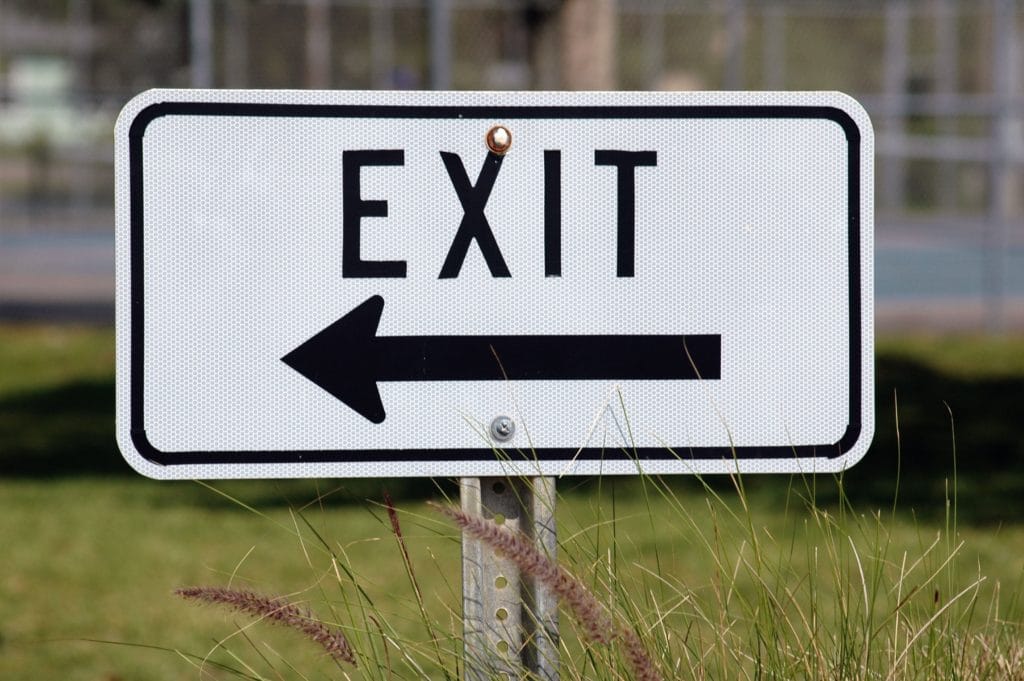
Your potential customers are looking for websites that add value to their lives. They are inundated by ads throughout their online lives and do not want to visit websites that are just glorified billboards. If they are unable to answer the question "What's in it for me?" within the first 15-30 seconds after landing on your site, they'll leave and your bounce rate will skyrocket.
The other reason that users will leave your site prematurely is fairly simple: trust. Creating a website is deceptively easy and, really, anyone can do it. That means that there are a lot of untrustworthy sites, including ones made by bad actors.
Luckily, many users have unknowingly become fairly sophisticated at analyzing the trustworthiness of a website. They are applying these principles to analyzing your website as well. They're looking for two things.
By focusing on adding elements that boost perceptions in the first category and limiting elements that boost perceptions in the second category, you enhance the likelihood of capturing people's attention long enough to employ other strategies designed to keep potential customers around.

Now that we've covered why people leave your site, let's talk about how you can encourage them to stay around.
Clickbait has a terrible reputation for a reason: people hate being promised one thing and then given another. Your blog posts and landing pages need to fulfill the promise set by the headline if you want people to stick around longer than a few seconds.
Fun fact: users spend an average of fewer than six seconds looking at your website's content. That doesn't mean they aren't getting any use out of it. It just means that they are reading your website in a different way than they read, say, a book.
Website visitors scan your content to get what they need in the least amount of time. If you create content designed with this reading behavior in mind, users will return to your website time and again to get what they need.
Engaging and informative subheadings, as well as shorter paragraphs (two to three sentences), are key to creating a scannable piece of content, even in your long-form content. Lists and infographics are also great options for easy-to-scan content.
Keep Reading: 5 Reasons You Need a Professional Copywriter: Step 2 of 9 for Dominating Online
Even the most well-written posts will leave visitors cold if there's nothing in there that directs them on what to do next. The best time to ask them to take action is right after they've finished reading a blog post. Don't be afraid of direct calls-to-action (CTAs). These CTAs add value to the user experience and increase the time spent on your site.
Another way to direct readers to other content of value is to insert internal links to related content throughout your content as a way to direct traffic through your site. (Ever started reading a particularly valuable article and clicking on every link in it to read more? That's the kind of content direction we're talking about.)
Whenever you have an opportunity to keep traffic on your website, you need to take it. This is especially true with your landing and thank you pages. Users that have landed on these pages have taken an action that shows they are interested in your product or business and want to learn more.
Instead of leaving that lead cold, why not present them with related, useful content on your site that keeps the reader engaged longer.
Guest blogging is a win/win arrangement. When you host guest bloggers on your site, you're inviting a brand new audience to your website as well as taking a little bit of content creation off of your plate. Just be sure that you only post high-quality, original posts without spammy links. Google is cracking way down on low-quality guest blogging.
Similarly, when you guest blog on other sites, you're able to build credible and trustworthy backlinks to your site. These backlinks are a key part of your search engine optimization strategy.
LinkedIn has become the most valuable B2B social media site out there. If you have a moderate to large following on that platform, it can be incredibly valuable to start posting content there to start directing traffic back to your own website. This will also serve to raise your profile in your industry and build trust.
Keep Reading: 12 Effective Digital Marketing Strategies in 2020 and Beyond
Have you nailed your high-intent and popular keyword bases in your SEO strategy? If so, it's time to start investigating the best long-tail keywords to begin targeting. Long-tail keywords are more like search phrases than search words and it's the future of search.
Long-tail keywords now account for the majority of web searches. People are no longer searching for "wallpaper removal." They're searching for "best ways to remove wallpaper." It's time to start incorporating these in your paid SEO strategies.

Content aside, there are many things you can do to make your website a pleasant experience for your visitors. People like to hang out on websites that are welcoming and easy to use. These easy to implement formatting tips will help keep your bounce rate low.
A sticky website is one that benefits both your potential customers and your business. A sticky website works hard to keep your visitors around long enough that they become warm leads and then, eventually, customers. A sticky website is the strongest tool in your digital arsenal.
So, you have to ask yourself: How sticky is your website?
—
Thrive Design is a customer-centric web design and marketing company from Seattle. Contact us today to find out how we can elevate your business online! Find us on Clutch, UpCity, LinkedIn, Facebook, and Twitter.
In today's segmented world, it seems like there are more and more companies offering one, specific service they claim will revolutionize your business. SEO, graphic design, web design, content writers are all out there ready and waiting to help you take your business to the next level.
The problem is that, at some point, you will find yourself working with three or four different businesses all trying to optimize your website.
Will they work well together? How many times will their wires get crossed? And how will your website suffer as a result?
A web design agency that practices the principles of SEO web design can eliminate all of that trouble and the hassle that comes with wrangling different vendors and agencies.
SEO web design refers to designing and developing SEO-friendly websites. This means designing your website using SEO best practices, not designing a website, and then applying SEO on top of the existing site.
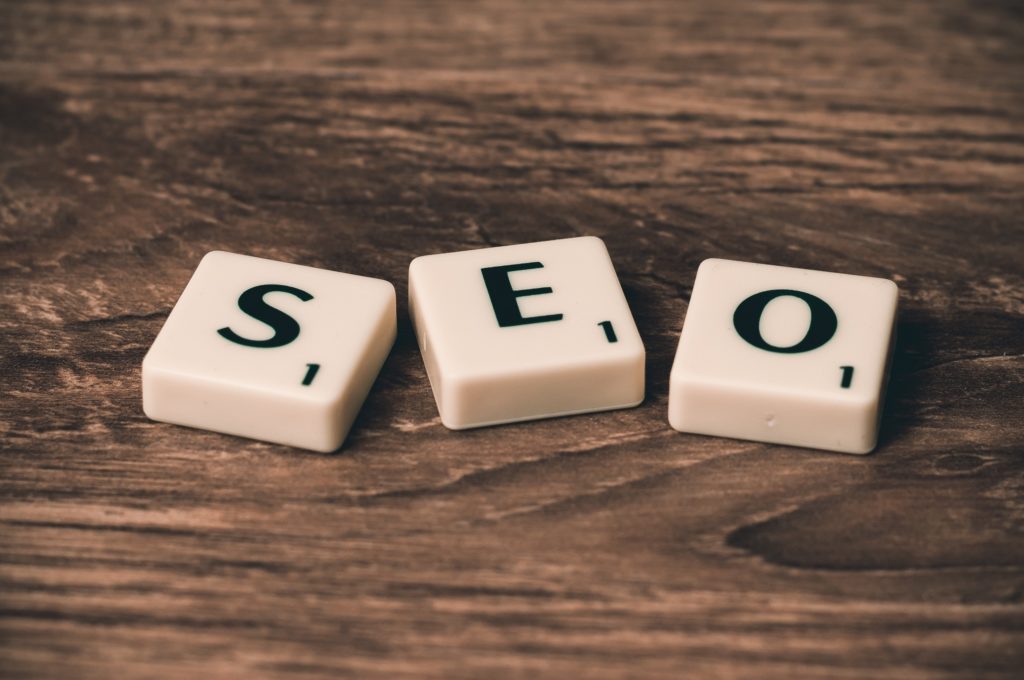
Despite what many people seem to believe, SEO and web design need to go hand in hand. You can't do one well if you are not paying attention to the other.
When your site is designed with these principles in mind, you are guaranteed to keep your customers, and search engines, happy.

Search engines, especially Google, want to keep their users happy by suggesting the best websites for their search queries. One of the ways that Google measures how happy users are with your site, also known as user engagement, is by measuring the average time spent on your page.
Good design, and good content, are vital to ensuring a positive user experience. Traditional web design firms only really concern themselves with the first part of that equation. A web designer that is also fluent in SEO principles will design your business a website that ensures an overall positive user experience, not just one that looks pretty.
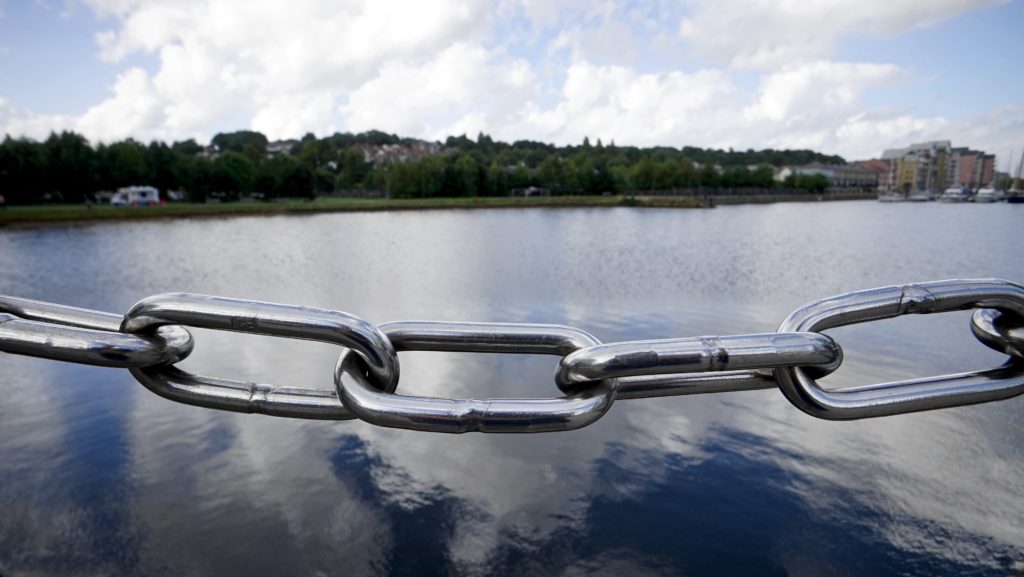
Backlinking and interlinking refer to ways that links are used to direct users to your content.
Backlinking is when links to your website and content are featured on other websites and articles. This shows search engines that people view your website as a source of credible information. A good digital marketing strategy can help increase the number of backlinks to your site.
There are several ways to increase the number of backlinks to your site. You can partner with other local businesses to have them link to your site and, in return, you link to their site. You can partner with influencers in your field. You can also do a simple search for people that are writing about your field and pitch them your content to see if they will link out to your content.
This is an SEO strategy that can take some time to build. Interlinking, however, is an SEO strategy that can be built in from day one, if you have a web designer that knows how.
Interlinking is ensuring that your website's content includes links to other parts of your website with content that users interested in that topic may find helpful.
There are a few reasons that interlinking is important in your web design.
For example, on our last blog on the importance of copywriting, we linked to our copywriting services page. That signals to search engines, and users, that these two topics are linked and helps guide visitors towards services they could be interested in.
![web design [suburb]](https://thrive.design/wp-content/uploads/2021/01/web-design.jpg)
If you currently have a content marketing plan, odds are you know the importance of encouraging social sharing. Even if you don't have a content marketing plan, you probably know how important it is to have your site shared on social media sites.
There are definitely instances where social links and shared content on social media sites have shown up before the official website in searches because those links can be more relevant to specific searches.
Web designers that know their SEO stuff know that it's important to include social sharing links prominently and consistently throughout your website in order to encourage this kind of sharing. You want to ensure that these sharing buttons are not just on your blog posts, but also on landing pages, lead magnets, and any other content that you want to be shared.
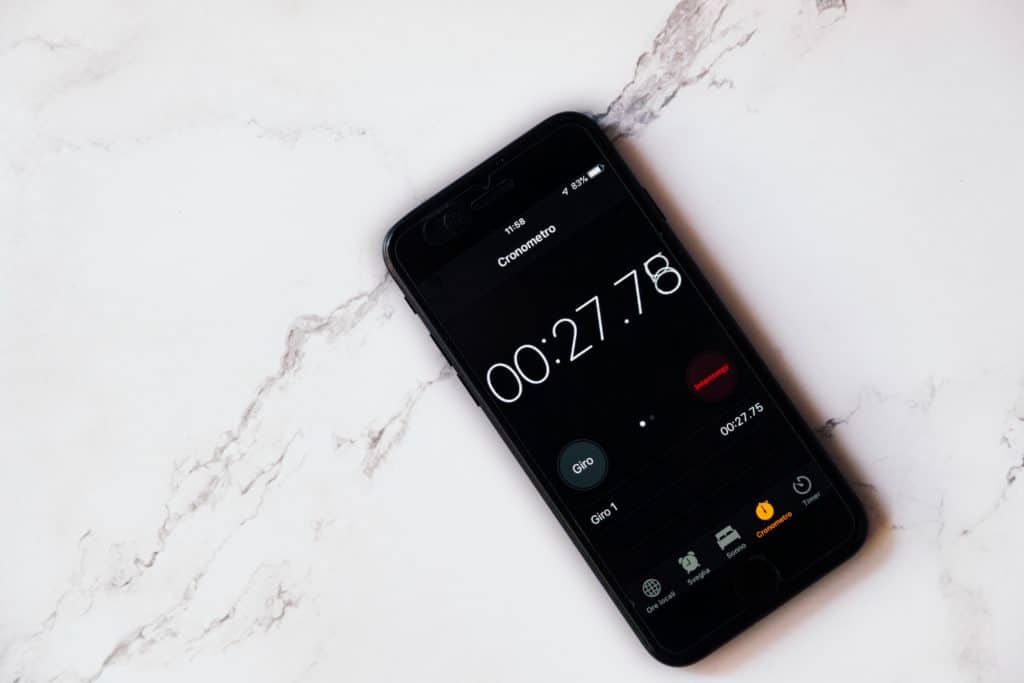
I love talking about website speed. Having a website that loads as quickly as possible is the best thing you can do to ensure your visitors have the best experience possible. A fast website is also a crucial element in SEO success.
Web design is ultimately what dictates your site's speed. Some designs just load faster than others. A design that's loaded down with unnecessary JavaScript will load slower than one that's not. Images that are optimized will load faster than those that are not.
Web designers that understand the importance of speed in SEO are more likely to make design decisions that will ensure a speedy experience for your visitors.
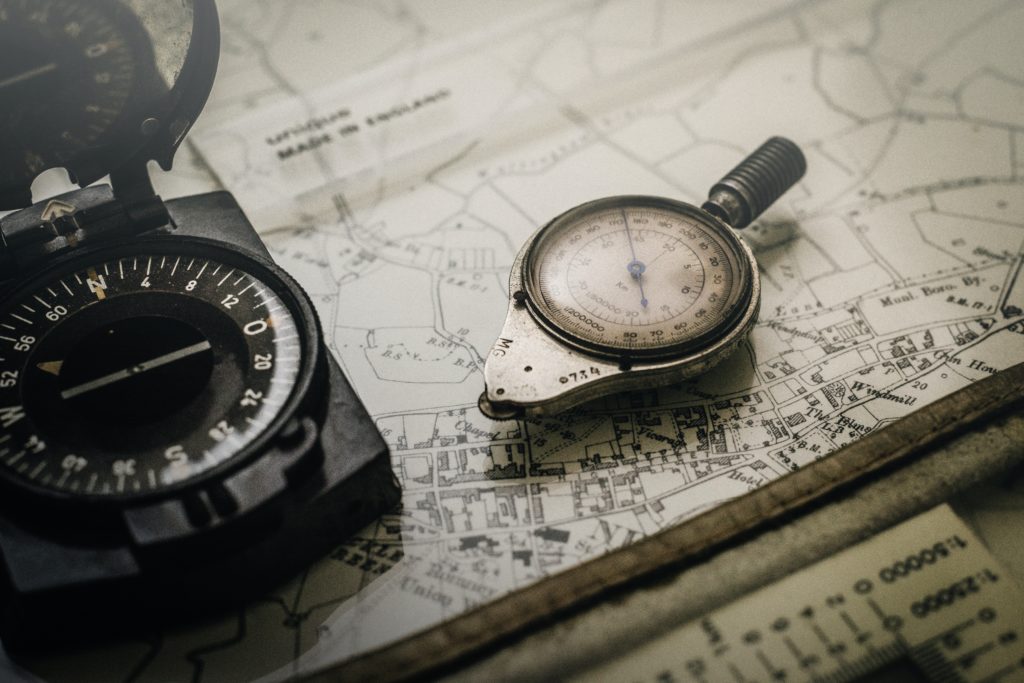
Navigation is another area of site design that pairs SEO and web design principles. An intuitive navigation setup is a key element to both a usable website design and SEO success.
Simply put, the easier it is to navigate your site to find the information needed, the longer a visitor will stay on your website. The longer a visitor stays on your website, the better your SEO rankings since time on site is a key ranking factor for Google and other search engines.
In 2021, we are all well aware of how interconnected things are, especially online. Web designers should be no exception to this rule. Knowledge of SEO principles and techniques applied to established web design principles and techniques can take a good website to a great website. You and your business deserve nothing less.
—
Thrive Design is a customer-centric web design and marketing agency from Seattle. Contact us today to find out how we can elevate your business online! Find us on Clutch, UpCity, LinkedIn, Facebook, and Twitter.
2021 is around the corner and it’s time to start planning your new year. We’ve talked a lot about how important a website is to your business and your entire online presence. When you hire a professional web design firm, the interview phase is key to ensuring you get exactly what you need. But what questions should you ask a web design agency?
You don’t want to feel like you’re asking questions just to ask questions. You want to ask questions that will help you pick the perfect agency for your website needs.
These ten questions are designed to help you get the information you need to help you find a web design firm that provides you with the level of service you need and a website that takes your business to the next level.
These are a great starting point for interviewing a web design company when you’re looking to update the look, feel, and functionality of your website.
You can add to them with your own specific questions. Remove ones that aren’t relevant to your situation. Tailor all of them to your specific needs.
Let’s dive in.

Does the agency you are interested in have a schedule for regularly communicating project updates or do they rely on the client to take the lead?
Is there a streamlined process for getting updates? What about revisions?
If my plans change, how can you address that with the design company?
Will you have access to a dashboard to track progress or a dedicated point of contact?
When you’re investing a significant amount of money into a project, you want to be sure that the project is on track and that you’re getting what you want. Good project management on the agency's side is crucial for success. This concept is why wedding dresses and custom suits require multiple fittings. When you’re paying that much money, you want to make sure that the quality is there and the fit is perfect.
An agency that doesn’t have a system for providing feedback to clients, whether it’s through a project dashboard that is automatically updated or a single point of contact who is in touch regularly, isn’t an agency that’s focused on providing a high level of customer service.

This is a tricky one. In retail, there’s a popular saying that the customer is always right. That’s not always the case for web design clients.
As web designers, we have detailed knowledge about what websites can and cannot do. We read news stories and blogs daily about the latest technologies, tools, and trends that affect web design. We live and breathe this stuff.
On the other side of the table is you, the client.
You have intimate, detailed knowledge of your business and what it needs in a website. You know your audience inside and out. You are aware of what your competition’s websites look like and what kinds of things they can do. You know what your goals are for the new website.
As experts in each of our areas, there will come a time when we don’t agree on something that should be included in your new website. Whether it’s a feature that’s prominent on your competitor’s site but is about to be obsolete or a layout choice that works great for your products but is dated in terms of web design trends, you and your web designer will disagree at some point.
It’s how this kind of disagreement is handled that sets a good web design agency apart from a great web design agency. You want to work with an agency that can get to why you want a certain feature or layout, and provide you with options that take the best advantage of current trends and technologies.
You don’t want an agency that believes they know best when it comes to your website.
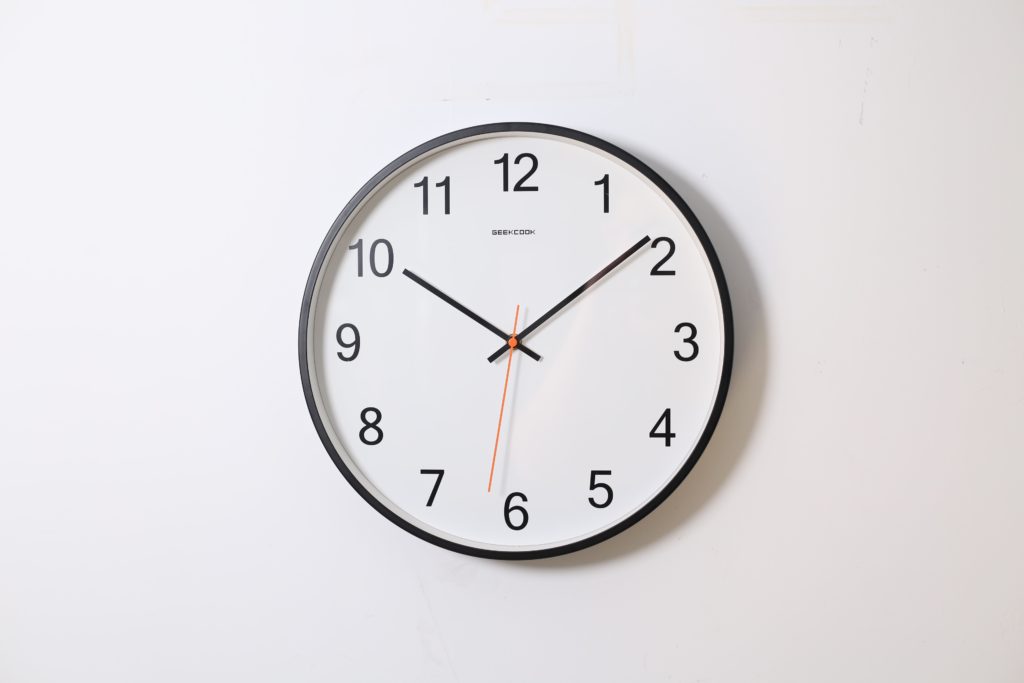
This is important when you are working with an agency in a different time zone. I’m based in Seattle and work with clients and partners in Australia to England time zones, so I am very familiar with the need to verify when people are available for meetings.
When working with an agency, you want to find one that has working hours that at least have a little overlap with yours so meetings aren’t too hard to schedule. If the best choice for you has little to no overlap with working hours, you need to ensure they are willing to be flexible to accommodate your schedule before you sign anything.
No one wants to get excited about finding the perfect agency to realize that you can only meet with them at 7 AM or 7 PM local time.
Along with this, you also want to ask about their turnaround time for email requests. No one wants to sit anxiously waiting to hear back from their web designer when they have a question. You want to work with a company that prioritizes client service and respects your time.

Spoiler alert: Not all web design agencies will host your finished product. This means you’ll be on your own to find a third-party hosting provider that can provide a hosting environment that provides enough bandwidth and speed to power your new site. That's why this is a key question in any interview you hold.
When you work with an agency that provides hosting, whether through a third-party or on its own, you are guaranteeing yourself and your website a better operational experience. Why?
No shared hosting means fewer sites on the server. Fewer sites on the server means faster speeds and less chance of a virus from another site bringing down the server.
The hosting provider is guaranteed to be an expert on the platform your website is built on. For us, that means we are WordPress experts. We stay up-to-date on the latest vulnerabilities and patches and your WordPress site stays as safe as possible.
Your hosting provider already knows the ins and outs of your website. If you’re the kind of person who takes their car to the dealer for service, you know what we’re talking about. Who better to know how to fix something that broke than the company that built it in the first place?
Agencies that host sites they build generally have faster support response times. Because of the 24/7 monitoring system and dedicated team of professionals, we can boast of a 15-minute response time. A quicker response, by the people responsible for maintaining your site hosting, is a service virtually unmatched.
(It is important to note that website hosting is usually an additional cost above and beyond the price for the design and involves an ongoing contract.)
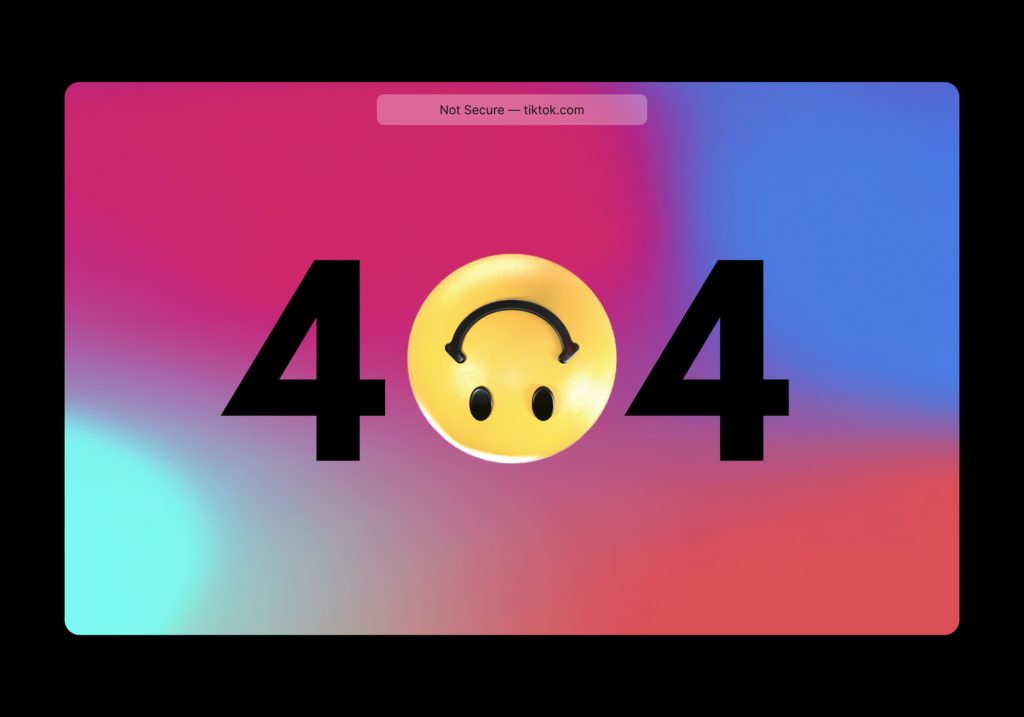
If you find an agency that does provide their own or managed hosting services, a few follow-up questions are needed to ensure that the service they provide is the service you need. The internet can be a daunting place for websites. There is always someone looking to steal your customers’ information or use your website for other nefarious purposes.
You want an agency that backs up your website regularly so that, if your website does go offline, the most recent version of it is ready to go. This practice is essential to minimizing your website’s downtime in case of a malware or ransomware attack. They should also be clear on what their process is in the event of a downtime or hacking event.
Downtime costs your business money. Every minute your website is offline is a minute a customer isn’t finding you. While security plugins do some work, nothing beats a person to talk to when something goes wrong. A web design agency that provides hosting should be able to provide you with uptime statistics that show the average amount of time their websites stay online.
At Thrive, we offer managed hosting services through Kinsta, a company dedicated to hosting WordPress websites that guarantees 99.7% uptime. When you purchase a Thrive Care Plan, we provide 24-hour backup, service, and performance monitoring.

When a website is hacked it must be cleaned or restored from a backup. You need a hosting provider that backs up your website regularly so there’s an up to date copy ready to go.
You need a hosting provider that provides 24/7 service. Website hacks don’t conform to normal business hours. They can happen at any time of day, any day of the week. You need a hosting provider that is on call at all hours to address the hack as soon as possible keeping your visitors and their information safe.
Because we offer hosting services through Kinsta, if your website gets hacked while we are hosting it, we will clean up and restore your website for free as a part of our Care Plan.
While there are many WordPress security plugins available, if an agency is offering hosting services, they should be able to tell you in detail what the process is for notifying you, fixing the vulnerability, and getting your website back to normal.

Let's talk for a minute about Squarespace and Wix. It is possible to build low-cost websites on these platforms or find inexpensive designers who will customize one for you. It's a tempting route for some business owners.
But, and this is a big but, you do not own your website. If you decide to leave to a more robust platform like WordPress, it's almost impossible to transfer your site out of these platforms. That's because you are essentially just renting space that you can customize.
Think about it like a brick and mortar business. Working with Squarespace and Wix is like leasing space from a landlord. You get a base to start from and can customize it pretty well but, at the end of your lease, it's hard to take everything with you and replicate it elsewhere.
Some web design companies offer to build your site on their proprietary platform. This is kind of like the Squarespace/Wix scenario. Unless they build it in a way that allows you to easily transfer content management systems, it will be hard to replicate if you leave their proprietary platform.
Speaking of content management systems, you want to be able to ensure that you can use the CMS used for building your website. It’s important for time and budget management that you can make small changes on your website when you need them, without having to go through an agency. You should also ensure that your site can be transferred between content management systems so you have flexibility down the line when it comes to hosting.
Finally, if there are conditions to you owning your website, such as staying with the agency for a certain length of time, you need to understand those before signing any contract.

By law, the person who creates content is the person who owns the content, unless otherwise stated. This includes the copy and images used on your site. It may not seem like a big deal who owns the copy and images on your website but imagine this. You end up taking your website to a different hosting provider after it’s done being designed. Your competitor goes to your original agency and, because they still own the rights to the content created for you, they use it pretty much verbatim while tweaking it for their new client.
If they own the content, this could absolutely happen. It’s unethical and pretty shady, but it’s not illegal and it’s not something you could easily sue them over.
By owning the copyright to the copy and images created for your website, you ensure that your brand voice and integrity is safe. You are the one who can protect it. You are not relying on a third party to value your brand identity as highly as you do.
However, many agencies do allow you to submit your own content that they will drop into their design. If you find an agency that is otherwise a fit, this could be a good option to consider. There are many freelance writers and content producers that can work with you to produce website content that you will own.
Whether you work with the web design firm itself on the copy or hire a freelancer, it's important that you consider search engine optimization when it comes to your content. (Yes, including images. There's lots of important SEO work that needs to be done on image descriptions and alt tags.) Who owns your content doesn't matter much if search engines don't register it.
Related reading: SEO Seattle
Related reading: Copywriting seattle

The larger the design company, the larger the team of designers ready to take a stab at your website. While this may be a bit of hyperbole but larger agencies do have multiple teams of designers in order to spread the workload around and not overwhelm one or two designers.
When a team of designers is working on your project, you can have two, three, or even four individual designers making design choices and changes to your site. Unless a team is a well-oiled machine, having multiple people with multiple design points of view and multiple opinions can spell disaster, or at least mediocrity, for your website. You can ask them to address how their teams work together to benefit the client.
Now, these same dynamics could push your site to be better but the same results can be had from a single designer whose aesthetic you like and with whom you have regular meetings. A single designer means a single point of contact and just one pair of hands making changes, reducing the risks of mistakes and oversights.

Unless you are purposefully looking to take a chance on a newer designer in exchange for a lower price, experience matters a lot in web design. Each kind of website has different requirements, different goals, different outcomes.
A designer who specializes in e-commerce sites may not be able to design the best authoritative website and vice versa, someone who only builds websites that only generate leads may not be able to design an effective e-commerce website.
Ask how many sites like yours the agency has built and ask to see examples of their work. You want to make sure that they show you sites in the same category as yours so you have a good idea of what you’re getting for your money. You can and should talk directly with the businesses they worked with that have sites like yours. It will give you a good feel for what working with the design company will be like.
If you ask to see sites whose main purpose is to generate leads and all they show you are e-commerce sites, odds are good that they don’t know a lot about what goes into a lead-generating website.
Take the time to figure out what kind of website you have and what kind of website you want before sitting down to talk to design agencies and you’ll be better prepared to judge the kinds of websites they share.
Choosing the right web design agency is an incredibly important decision. Odds are, you are prepared to spend thousands of dollars updating your website and you want to be able to leave it alone aside from regular content updates for a while. If you choose the wrong agency, you’ll end up with a site that doesn’t meet your needs and doesn’t move your business forward.
Thrive could be exactly the right fit for your business.
If you’re ready to get started and have a good idea of what you need, go ahead and fill out our Project Inquiry Form, and we will be in touch ASAP.
If you’re curious and want to know more about us, our design process, and how we can help you revitalize your web presence, drop us a line, and we’ll get in touch to schedule a time to chat.
Either way, we’re excited to hear from you.
—
Thrive Design is a customer-centric web design agency from Seattle. Contact us today to find out how we can elevate your business online! Find us on Clutch, UpCity, LinkedIn, Facebook, and Twitter.
If you clicked on this article, odds are good that you need a new website or, at the very least, a redesigned website. Your website should be easy to maintain and update and do more work than you at bringing in new business. If it's not meeting these two, basic requirements of a business website, then you have some work to do.
That said, it can be hard to pull the trigger on a potentially-expensive and lengthy redesign process based on just your gut feeling. To help you in your decision-making process, here is a list of seven, easy-to-measure signs that your website needs to be updated.
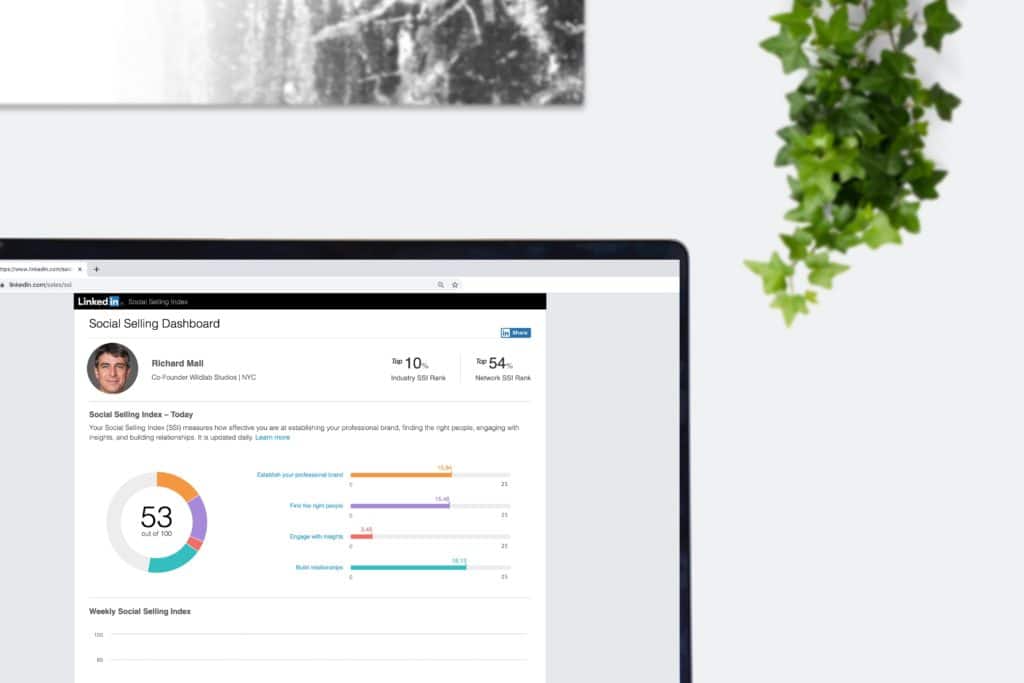
There are seven questions you can ask yourself about your current website to easily figure out if it's time for a new website or an in-depth redesign. These questions should be easy to answer and will give you a good starting place if you decide it's time for a redesign.
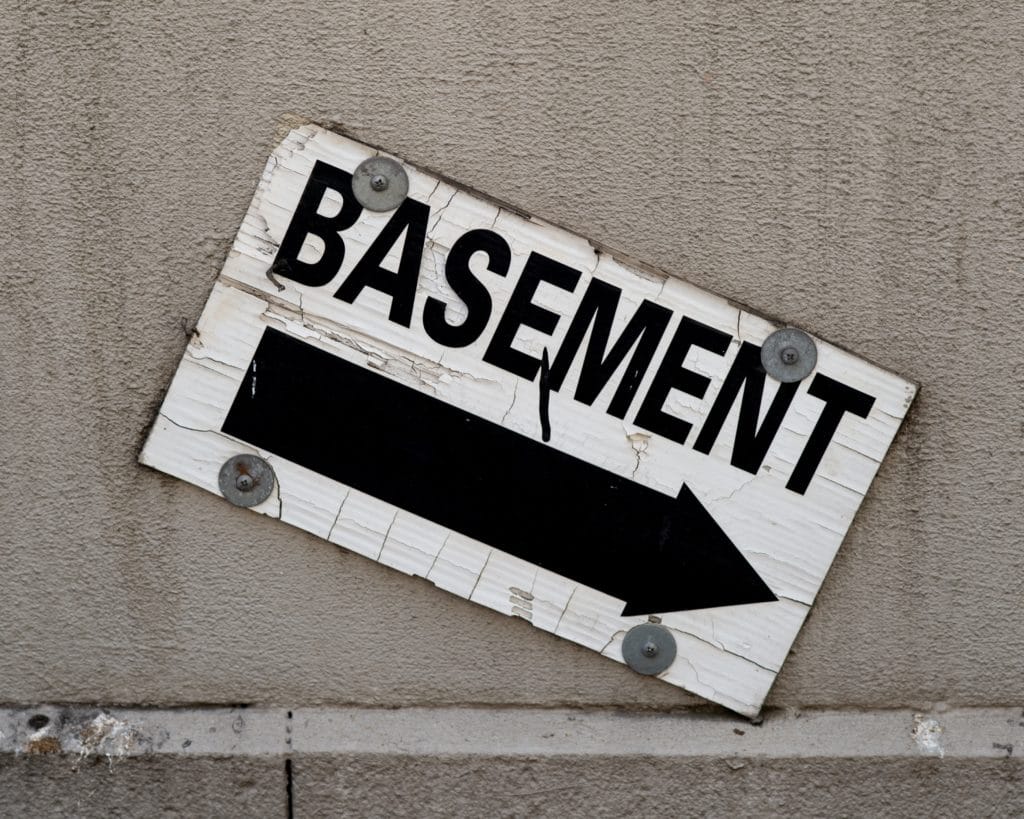
Your conversion rate is the measurement of how many potential customers that come to your website turn into actual customers. A website that ranks well and brings in lots of leads is great but if those leads aren't turning into customers, your website isn't doing its job.
A low conversion rate can be a sign that visitors don't find your website helpful in solving the problem they need help solving. Your website should be designed with your target audience in mind. It should be designed so they can find the answers to their questions quickly and easily.
Strategically placed calls-to-action and opt-ins above and below the fold help increase conversions and strategically optimizing for important long-tail keywords will help you attract clients who are ready to buy. Your website design should help your conversion rate not hinder it.

Another sign that your website isn't meeting the needs of your customers is a sky-high bounce rate. A high bounce rate shows that your customers are coming to your page, not finding what they need, and immediately leaving. Google Analytics will show you this statistic right on your search console.
You want your bounce rate to be below 40%. A bounce rate between 40-55% is generally ok; there's some room for improvement but you're not in real trouble. A bounce rate above 55% shows real room for improvement for your website.

Featured Reading: Why is Web Design Important
If your website is not mobile responsive, it is definitely time for a redesign. Having a website that is mobile-friendly is no longer optional. Search engines, led by Google, are now basing search rankings in part on whether a site is mobile responsive. Your site's search engine optimization is now partly based on whether your site is mobile-friendly.
Additionally, mobile website traffic makes up more than half of web visits. If your site isn't compatible with mobile devices, you're missing out on all those potential visitors. Your visitors expect the same user experience from your website, no matter what device they use to access it.
Let's take a look at some more numbers.
A redesign that incorporates the principles of responsive web design is a good move to improve your SEO, as well as your conversion rate and user experience.
Related reading: SEO Seattle

Did you know that 47% of consumers expect your site to load in less than 2 seconds and that 40% of those will leave if it takes more than 3 seconds to load? That's a lot of potential traffic you could be missing out on if your site is a slow loader.
Older sites tend to have graphics and images that are not optimized for a speedy loading experience. Users want what they want when they want it. They aren't going to hang around for all those graphics and images to load.
Long load times will also impact your site's search engine optimization. Google and other search engines prioritize load speeds when determining your search ranking.
Google started using site speed as a ranking signal in their algorithm in 2010. Google doubled down on the importance of page speed in 2018 by starting to use mobile page speed as a ranking in their mobile search results. Page speed will become even more important next year as Google has announced they will be implementing an update that will start judging web pages based on on-page experience, including page speed.
If you want to see how your website's speed measures up, check out Google's PageSpeed Insights. This will give you a good idea about whether you need a redesign before the 2021 updates go live.
Featured Reading: Top 10 Reasons Your WordPress Website is Loading Slow
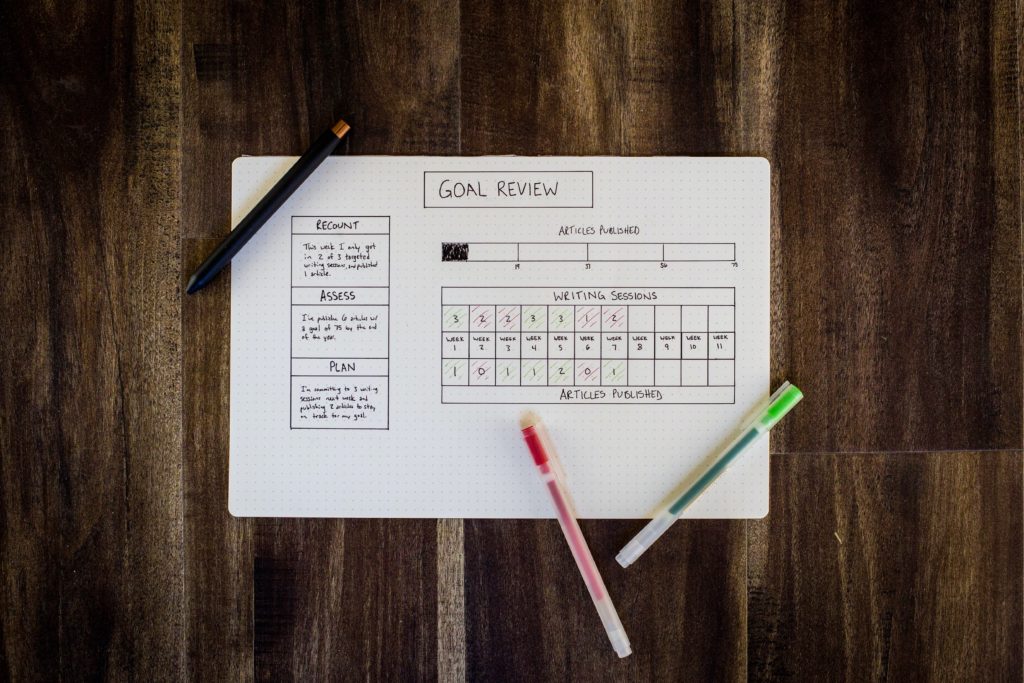
Nothing in life is forever, including your business and industry. Your website needs to evolve with your brand, products, and messaging. Your website needs to align with your message and the best practices in your industry. This is especially true if you have gone through a rebranding since your current site went live. Any good rebranding should have included an updated website but sometimes things fall through the cracks.
Your website needs to support the rest of your business. In the time since your last redesign, services may have come and gone. Your focus may have shifted from a product-based business to a consultant-based business, or vice versa. If your website doesn't reflect the changes made to your brand's services, look, and feel, you risk losing customers who get confused.
Even if nothing substantial about your business has changed, your website objectives may have changed. You may have started with an informational website designed to answer visitor questions but is that what you still need? Do you want a site that has e-commerce capabilities? Or one that allows your visitors to schedule appointments?
If your priorities and objectives have changed, your website needs to change as well.

Content management is a big part of a functional website. If your website isn't built with a user-friendly content management system, then your website is probably costing you money to make even the simplest of content updates. Adding blog posts shouldn't require a phone call or email.
Your content marketing strategy relies on your ability to update your website regularly. If you have to rely on a web developer or outside third party for content updates, your website is costing you time and money when it doesn't have to.
A website built on a content management system, such as WordPress, allows you and your staff to quickly and easily make updates as needed.

Just like fashion and home design, web design is defined by trends. Your website may not be bad, per se, but there's a good possibility it looks outdated if it has been more than three to five years since your last redesign.
If you're not a tech person and can't tell or don't care what looks or feels outdated, a good way to check is to look at your competitors' websites. Are they markedly different from yours? If they are, there's a good chance that your website is outdated.
Another reason to prioritize the look and feel of your website is that web users want to look at content that is beautifully designed and it impacts what they think about a business overall. When asked what their number one factor was in deciding the credibility of a business is, 48% said it was the website's design.
If you don't find your website nice to look at, then neither does anyone else. You need a website that is engaging, pleasing to the eye, and puts your brand's best foot forward. Remember, your website is your prospects' first impression and you want to make sure it's a good one.
Featured Reading: 10 Examples of Ugly Websites and How We Would Fix Them
Your website is the digital front door for your business. As more and more consumers are turning to the web to find places to shop locally, it's vital that your website is designed to answer their questions and keep them around long enough to convert them to customers. A website redesign or re-do could be just the thing you need if your website isn't converting customers like it used to.
—
Thrive Design is a customer-centric web design and development company from Seattle. Contact us today to find out how we can elevate your business online! Find us on Clutch, UpCity, LinkedIn, Facebook, and Twitter.
Category: Web design seattle
Trust me when I say I know how weird it is that I, a web designer, am writing a blog about how to find the right web designer. It seems like a conflict of interest when, logically, I'm going to want the answer to be "Thrive Design is the right web designer for you."
However, after being in the web design business since 2002, I know that not every client is going to be right for me and I'm not going to be right for every client. When there is a designer/client mismatch, the client ends up unhappy and the designer is left with a hole in their portfolio and potential bad reviews circulating the internet.
Which means, I am invested in making sure that the potential clients that come my way end up with the right designer for their project, even if it isn't me. That way, everybody wins!
Ready? Let's dive into the five things you should be looking for in a web designer.

Now that you know that I'm not here to just sell you on how great Thrive is, let's talk about what you need to know when looking for a web design agency.
First thing's first, you need to conduct thorough research and we're not just talking about which web design companies you like.
In order to find the right web designer, you should be able to answer the following questions:
Once you can answer these questions, it's time to look at options. The first thing people will tell you is to check out the portfolio of any company you are considering.
It's important, when you look at their portfolios, to pay special attention to more than just the picture they show you. Make sure you visit the site itself. Check the footer and see if that company is still doing the company's website work (most designers and developers include a link to their site and a credit in the footer).
Pay attention to how fast the pages load as page speed is an important factor in SEO and depends greatly on the quality of the web design.
Check out how the sites look on your phone and your desktop. Is the layout simple and uncomplicated? If you were a potential customer of that business, are you able to quickly understand what it is they do and find the information you need in one or two clicks?
Just remember that portfolios aren't a comprehensive list of everything a designer is able to do. If you like the look of their work, make a note of the features you want that you don't see and ask them if that's something they're able to do. You may be the first person to want that feature!
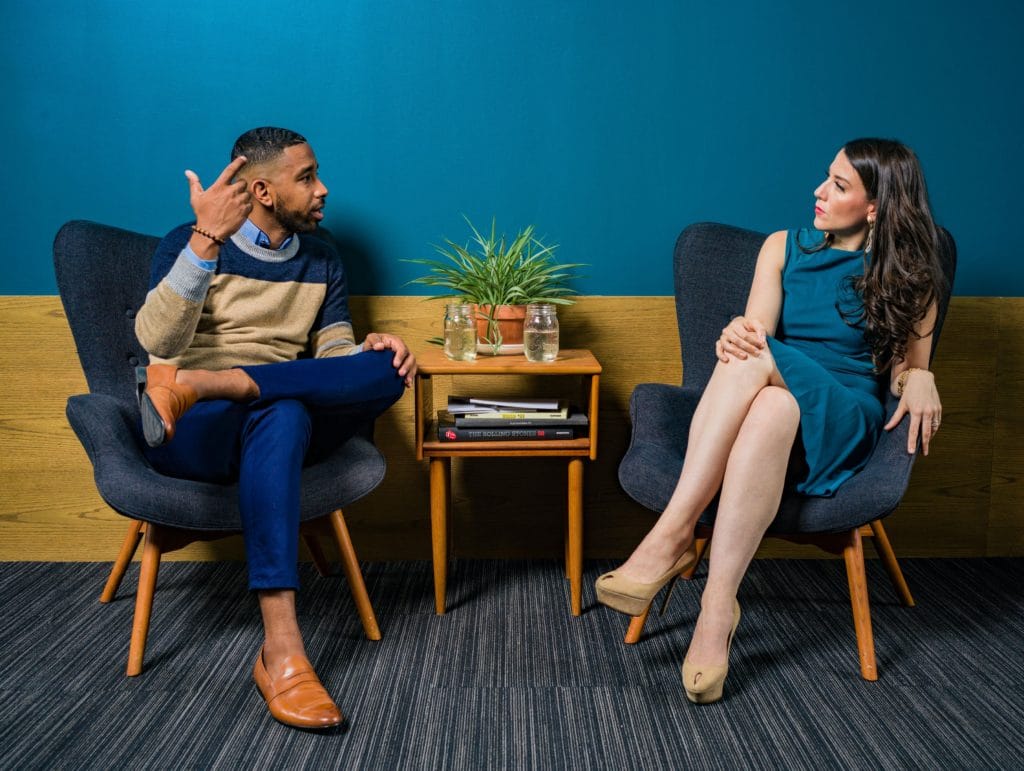
Featured Reading: 10 Best Web Design Interview Questions in 2021
All companies you look at will want to have an initial meeting with you to discuss your goals, what you want your website to look like and do, and your budget. It's standard. But, during this meeting, there are a few things you want to look for on the other side of the table (or camera).
You want a web design company that acknowledges and appreciates your expertise. You know what you're selling, and you have some idea of how you need to present it to your potential customers for maximum impact. No one knows your business better than you do. If a web design company doesn't recognize this and won't listen to your ideas, then they are not the company for you.
On the other side of that coin, you also don't want a web designer that says yes to absolutely everything you ask for, while not contributing any ideas of their own. You want to work with someone who is confident in their knowledge and expertise, and who isn't afraid to use that to create a website better than you imagined.
If a web design agency does nothing but nod their heads and produce an exact replica of what you say, then you aren't getting your money's worth. Your designer must be able to bring exciting ideas to the table.
It's also important to find a web design company that knows that this first conversation should not be the last one you have before being presented with a final product. Look for a web designer that has a plan for frequent communication and an easy way for you to send feedback throughout the design process.
Your opinions, experience, and observations are what is going to differentiate your website from your competitors' websites. You deserve to work with a designer that will put them to use.
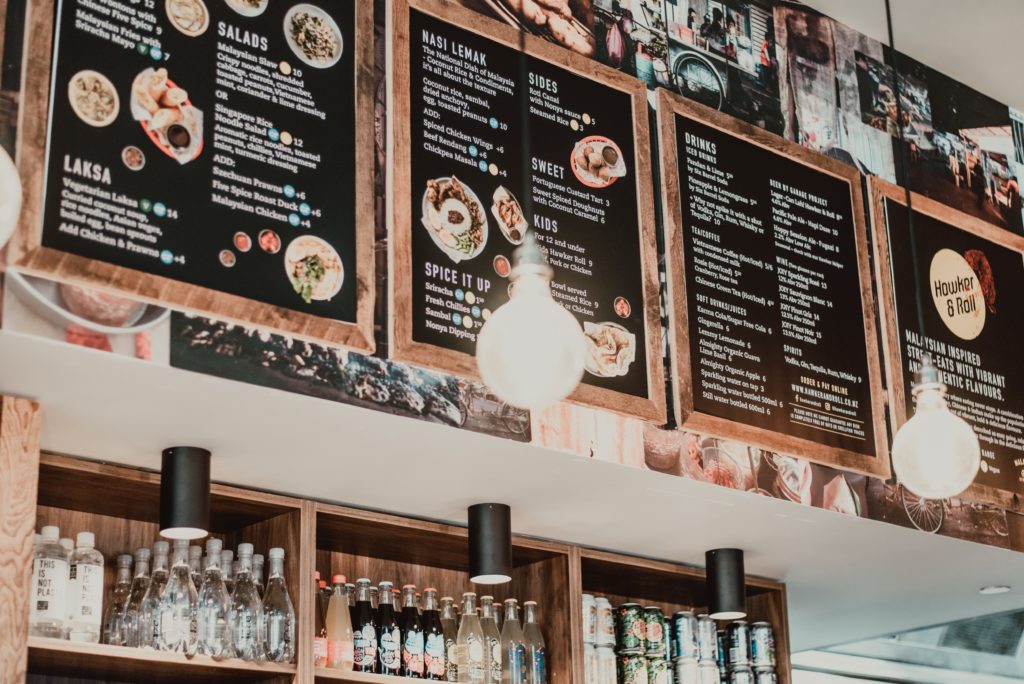
Unless you are lucky enough to have employees that are SEO experts, copywriters, and marketers, you're going to want to find a design company that can help with those elements as well. A website without digital marketing is like a chair with only three legs. Sure, you can use it but you know there's something missing.
Your website is the hub of all of your marketing. It's the endpoint for 99% of the customers you are reaching out to with your marketing pieces. When you work with a designer that is backed by a marketing team, you can be confident that your website will be functional as an overall piece of your business engine.
Ask about all the services your candidates offer as a part of your interview process. Will they help you create the content for your website? Can they help you with your overall SEO? Will they help you with branding? What about photography?
These questions will give you a better picture of what exactly you will be getting for the money you are investing.

This may sound obvious, but you want a web designer/developer that knows the latest best practices and conventions for creating websites that are easily found and user-friendly.
When it comes to web design, there are skills every designer should have but, most importantly, they should be dedicated to constantly adding to this list. Technology is not static. Google's algorithm is not static. Your developer's knowledge should not be static.
When reviewing a potential web designer's portfolio, make sure that they include examples of responsive sites. As more people are using their phones to browse vs their desktop or laptop, it's important that your designer can ensure your site is optimized no matter what device it is accessed from.
Responsive design is not just an important part of the user experience; Google has begun ranking websites based on whether they are responsive. If a candidate does not have experience or suggests a separate mobile site instead of a truly responsive design, it's time to move on to the next candidate. Responsive design is not a fad and you need a designer that knows that as well.
Your web designer should also design your website within a content management system such as WordPress, Drupal, Magento, or other web design software.
We are strictly a WordPress designer/developer for many reasons. Without a content management system, you will have to rely on your developer to make every single update your website needs from now until eternity.
If they mention a static HTML site, run, don't walk, far away, away from them. You need a content management system.
In addition to being up on the latest technology, whoever you choose should understand that creating your website should be about more than just making it aesthetically pleasing. They need to know how to create a website that will convert prospective customers into paying customers.
This includes knowledge of user-experience design, what makes an intuitive layout, and how to create powerful calls to action. They also should ensure that coding, WordPress theme, and plug-ins are all updated and running (before AND after launch).

Price is important. Their portfolio is important. Their knowledge is important. But the most important thing to note is whether you like them or not.
If you hire someone you don't like, you're not going to want to get in touch You're going to procrastinate calling when you need something. You're not going to engage in chit-chat that is sometimes way more enlightening to your designer than any formal interview.
In short, your project will suffer.
Featured Reading: How Much Does it Cost to Redesign a Website?
Your project deserves the right web designer. I hope these tips will help you choose the designer that will bring the right combination of know-how and experience to create a website that will serve as the perfect center for your business marketing ecosystem.
For more on Thrive's services and process check out the below video.
—
Thrive Design is a customer-centric web design company from Seattle. Contact us today to find out how we can elevate your business online! Find us on Clutch, UpCity, LinkedIn, and Facebook.
Category: Web design seattle
When it comes to most things in life, you get what you pay for. With televisions, cars, and clothing, you can see and feel the difference when you splurge for high-end items.
With websites, it can be harder to understand why you would pay $15,000 for a website when you could get one for $500. Is the quality difference really going be that much?
The answer is “YES but.” Just like a Range Rover isn’t the right car for everyone’s needs, a $15,000 website isn’t right for every business. But, if you’re a business that needs a $15,000 website, a $500 or $5,000 website will leave you frustrated and your customers unsatisfied.
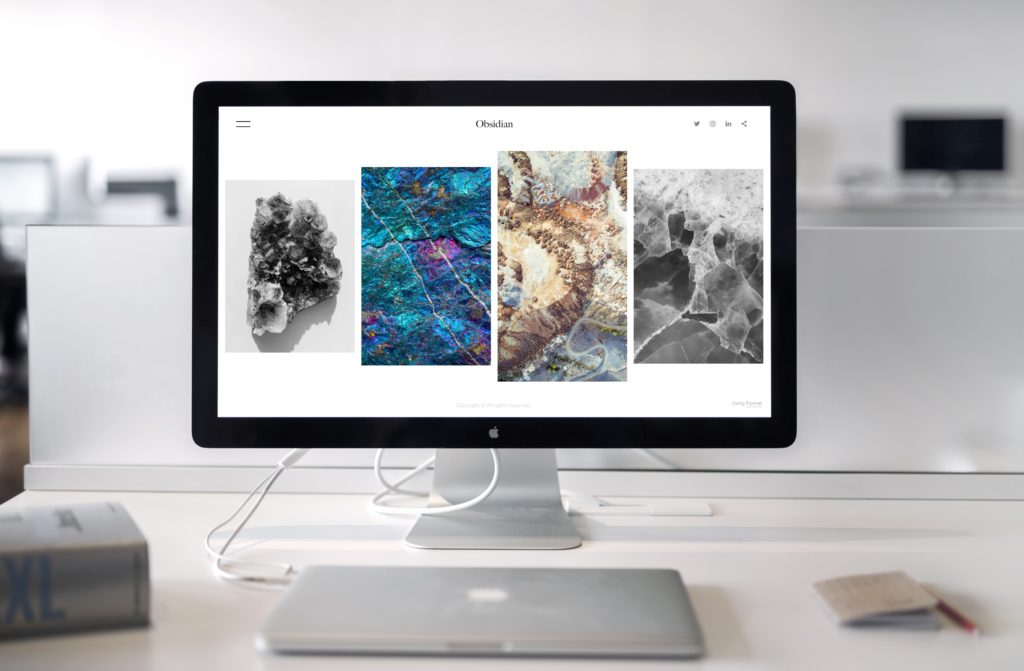
Most $500 websites are a step or two above free template-based website building sites like Wix and Squarespace, but the average visitor may not be able to tell the difference. For many of these three-figure websites, the cost is spent hiring a pro or power user of a popular drag-and-drop website builder to create a better site than you, a new user, could build yourself.
Sometimes, you can get a “custom” website for this price. However, when you pay around $500 for a website, you will only get one or two-page template options, meaning your entire website will look, and function, the same. Also, the website probably will only be custom in name only. We’ll bet that all of the “custom” websites from that developer all look the same.
But! These are not necessarily bad things! If you are looking to start a blog, establish your very first website, on only need limited functionality, this low-cost option can be exactly what you need to test the waters and launch your next great idea.
There are some great things about entry-level websites. They are easy to build. They can go live quickly. And, well, they don’t cost a lot of money.
These days, there are hundreds of thousands of templates available for you to choose from so you can probably closely approximate the exact look and feel you are looking for. You also have access to free stock photo websites so you can customize your website the way you want.
Issues with low-cost websites like these tend to crop up when you want features or functionality that go beyond what comes with your template. When that happens, you end up paying lots of money for someone to tinker with the code of your website to get you what you want.
You can also run into problems with your website looking remarkably similar to your competitors’ websites. The popular templates and stock photos are popular for a reason: everyone likes their look, feel, and functionality. It may take a little more research and time on your part to build a drag-and-drop website that stands out in the crowd.
If you’ve ever listened to a podcast, you probably already know one of the most popular drag-and-drop website providers on the market: Squarespace. A similar provider of drag-and-drop template websites is their competitor Wix.
A third drag-and-drop player, and the newest member of this group, is a website called PageCloud. This is a more robust page builder and can be more expensive than Squarespace or Wix but is a great option if you need a website with more functionality.
Featured Reading: How Much Does it Cost to Redesign a Website?

When you work with a traditional web design agency, you can expect to spend about $5,000 on your initial website build. These websites are sleek and stylish and require a little more work from you on the back end to maintain the new features that you get when you work with an agency. For this price point, you can expect a good number of features but little personalization or customization to your specific brand and business.
This option is great for growing businesses that want features and functionalities beyond what the drag-and-drop website builders provide.
A mid-range website can offer a wide range of eCommerce features, portals for lead gen content, page template styles, mobile responsiveness options, and more. The other pro to working with a mid-range agency is that you have access to professional designers and developers who can help streamline your website.
To keep the volume of business needed to turn a profit, many of these agencies don’t provide a level of personalization that may be needed to stand out in a crowded marketplace.
When you go with a mid-range website, you are not paying for the services that can truly set your website apart. These are things like consumer/brand and competitive research, original photography, copywriting, brand strategy, and the integration and training on a content management engine of some kind.
Most of the small, local web design agencies around you will be able to build you a website at this price point. A Google search for “web design agency near me” will bring up a list, along with descriptions and reviews, of web design agencies that can help you out. This is a great place to begin your research.
Another great resource is Facebook groups for local small businesses. These groups are probably full of other small business owners who have launched new websites. They’ll be able to give you recommendations for good agencies that can give you the website you’re looking for.
Featured Reading: Why is Web Design Important?

If you are an established business looking to up your perceived authority, trustworthiness, and expertise, it may be time to consider investing in the Range Rover of websites. When you invest (and we use the word “investing” deliberately) in a high-end website, you are investing in your business.
A website in this price range gives you access to a level of personalization and service that ensures that your website establishes your authority and sets you apart from your competitors. These websites feature custom photography and copywriting, personalized branding strategies, integration with customer management, and email marketing systems. They are also intuitive to use for your visitors, mobile-responsive and designed from the ground up to take advantage of SEO best practices.
Related reading: SEO Seattle
Related reading: Copywriting seattle
These websites are top of the line and are designed to set your business apart from your competition. They are based on a thorough competitor analysis as well as an understanding of your business and goals for the new website. While your designer is likely to use a template, there will a much higher level of customization and tweaks to make the website perfect for your needs.
The biggest con of these high-end websites is obvious: the cost. A five-figure website cost can be overwhelming for business owners to think about on top of all the other business costs. But, when the time is right, investing in a website that meets all of your specifications can take your business to the next level.
Many of the same agencies that can build you a $5,000 website can build you a higher-end website. However, your vetting process should be longer and more in-depth than if you’re building a mid-range website.
You’ll want to check review sites like Clutch, interview former clients, and review any case studies the agency has published. It’s also important to sit down with the agency, the designer you’ll be working with if at all possible, and ask as many questions as you can about their process, their aesthetic, and how they like to work with clients to make sure the working relationship would be a good fit.
Featured Reading: 10 Best Web Design Interview Questions in 2021
There are great websites to be had at every price point, but the best website for you may not be available at every price point. It’s important to take into consideration your business’s needs and goals, your budget, and the needs of your target market.
If you have any questions or want to talk about your next project, let’s chat! You can find more information on our pricing and process to see if we would be a good fit for you and your business.
—
Thrive Design is a customer-centric web design company from Seattle. Contact us today to find out how we can elevate your business online! Find us on Clutch, UpCity, LinkedIn, Facebook, and Twitter.
Category: Web design seattle
Really, you only need one step for a successful website project: clear communication between you and your web designer. The problem is that that is easier said than done.

Many projects have been derailed by poor communication whether in the form of muddy expectations, too many points of contact, or one of many other misunderstandings.
But never fear, Thrive is here. Through our years of experience, we’ve figured out how to guarantee great communication with end results that speak for themselves.
Now, we’re sharing that formula with you.
Never assume your web designer knows what you need your website to do. While we can sometimes work what seems like magic, we do our best work when we know what you want and need your website to do.
These requirements can be anything from specific features you want to results you want your website to bring. Whatever they are, share them with your designer. They have the knowledge and experience to know what’s possible.
They may even have some great ideas you never thought of. They can even tell you what’s feasible based on your budget.
Speaking of...

Listen. No one likes thinking about spending money. We understand that. That’s why we encourage you to think about the money allocated towards your website as an investment.
That’s because a well-made website is something that will make your business money. It can help your business grow and bring more customers to your door. The money you spend building your website is money you are investing in growing your business.
While you’re thinking about your investment and outlining your requirements, you and your web designer may come to the realization that your desires outstrip your investment. And that’s ok! You can work with your designer to move some of your requirements to a second phase of development that can be completed at a later date.
Featured Reading: 10 Best Web Design Interview Questions in 2021

How will you know if your website (re)design is a success? You set SMART goals!
Specific.
Measurable.
Achievable.
Relevant.
Time-bound.
Setting goals in this way allows you and your web designer to come up with a plan that will end with a website that can achieve them. It will also help you easily track the website’s success once it goes live.
SMART goals are also important to set for the project itself. Having specific, measurable goals throughout the build process will help you and your web designer communicate about the progress that’s being made.
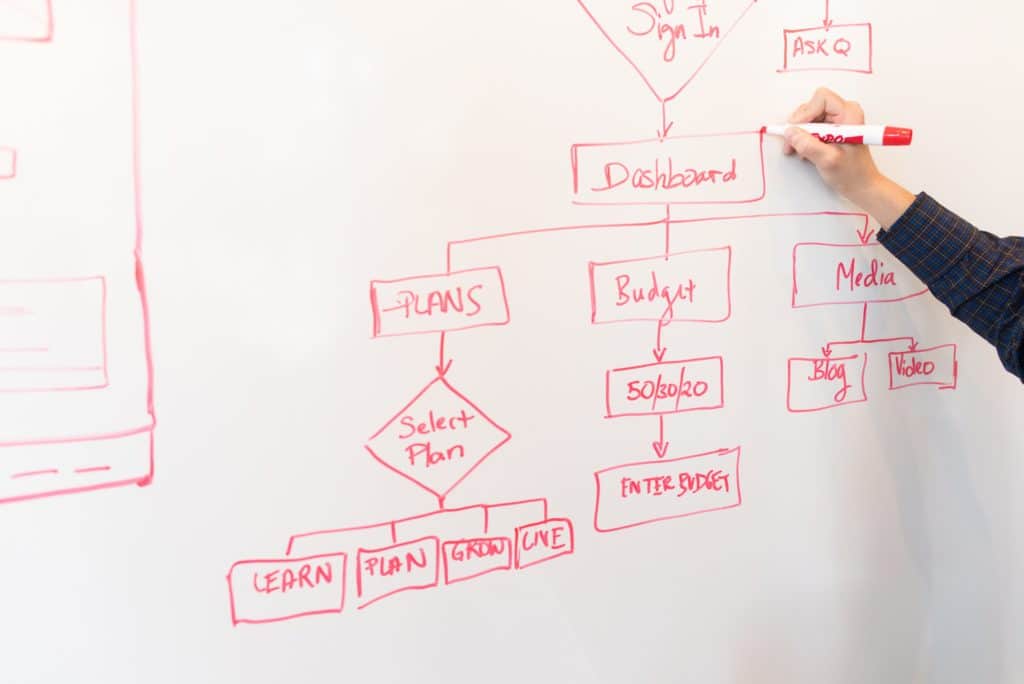
The BEST way to ensure good communication between your team and your design team is to outline HOW you will communicate before development begins. There are two things you need to cover.
Who the points of contact are. Ideally, there are only two points of contact: one person from your team and one person from the design team. That’s it. Any more and you risk people over-communicating and annoying everyone, under-communicating and missing important memos, or miscommunicating and sending mixed messages.
There will probably be more than one person on your team who will have a say in the website design process. Before the project begins, identify those people, and schedule a regular meeting where everyone can work together to respond to questions, provide feedback to drafts, and decide on requirements and priorities.
That way, your one point of contact will be able to speak with the design team with the confidence that comes with a team decision.
(On our end, one point of contact makes it MUCH easier to know who we need to reach out to with questions.)
Best ways to contact each other. Some people are best over email. Some people want a text message. Others are still very connected to the phone. We all have our communication preferences and communicating outside of those could have a negative impact.
A person may prefer email because they are away from their desk a lot and don’t often check their voicemail. Someone may prefer text messages because they get WAY too many emails and only go through them once a day. Whatever the reason is, a person’s favorite way to communicate is usually the quickest way they communicate which is great when it comes to staying on time.
We know that emergency situations pop up and a call is needed or something really needs to be documented in an email and that’s fine. People are flexible and will adapt as needed.

Ok. We know this has nothing to do with communication. But it is VERY important and we would do an article about ensuring a great website a disservice by not mentioning it.
Your website could be the most beautifully designed website in the world, lovingly made with no communication hiccups between you and your ideal design team and it still wouldn’t give you the results you want if the words on the page weren’t up to par.
Working with a skilled copywriter can take your website from good to great. Working with a skilled copywriter can help your customers identify with your product in a new way. Working with a skilled copywriter can take your ideas and make them shine.
Featured Reading: Top 10 Things Every Website Needs
There is a lot that goes into making a website great. It’s time-intensive work that requires a high degree of collaboration between a business and their chosen design agency or team. Good communication is a must if you want your website to be the best it can be. This process is a great way to lay a solid groundwork for that communication to blossom.
—
Thrive Design is a customer-centric web design and marketing agency from Seattle. Contact us today to find out how we can elevate your business online! Find us on Clutch, UpCity, LinkedIn, Facebook, and Twitter.
Category: Web design seattle
“If you build it, they will come” does not work with your website. If you don’t tend to these six areas on a regular basis, you risk losing valuable business for your company.

Two words: Responsive Design.
The average business website will get 40% - 50% of traffic from users on mobile and tablet devices. This number can be as high as 80% for some industries.
If your website isn’t designed so that it displays well no matter what device your visitors are using, you’re missing out on some business.
Two more words: Updated Design.
Trends in design aren’t limited to fashion and home goods. They apply to websites as well. A trendy element that you added to your site in 2010 may not read as well to 2020 consumers.
Just like you wouldn’t trust an interior designer whose portfolio looks like it was last updated in 1995, your customers aren’t going to appreciate a website with outdated design.
Consumers want a website experience that is easy and intuitive. If your site doesn’t provide that for them, they will look elsewhere.
There’s an easy way to check to see if your website is set up for the best user experience. If you can answer “yes” to the following four questions, you’re probably in good shape. If you can’t, you know where to start to create a better user experience.

If your website doesn’t show up on the first page of Google, does anyone care? Unlike the tree falling in the woods, people do.
When your business shows up on the first page, or ideally in the first few results, you have far more chance of someone who is searching for a business like yours, clicking through to your website.
Again, there is an easy way to check the strength of your search engine visibility: go to Google and search for the keywords associated with your business and see where you show up.
Be creative with your search terms. Add in your location and surrounding cities. Use abbreviations. All of these are opportunities for finding new clients and customers.
Related reading: SEO Seattle
Conversion optimization is the process of figuring out how many of your website visitors are taking the action you want them to at the end of their visit.
Here’s the straight-forward formula used to calculate the conversion rate of your website: Conversion Rate = [Action Number] / [Visitor Number] * 100.
If that number isn’t what you want or need it to be, there are a few, simple things that you can tweak to bring it up.

Faster websites are better websites. Slow websites result in frustrated visitors and lower search rankings. Fast websites lead to happy visitors and higher search rankings.
And how fast is fast? Your site should load in no more than two (2) seconds.
Fast websites build trust with your visitors. They keep visitors engaged with your content. They help visitors understand what you do, better.
If you’re concerned about the speed at which your website loads, there are some things you can do to up your website’s load speed.
Your website visitors are looking for a website they can trust. One that will be there when they need it. One that is secure and reliable.
For that reason, you need to be considering website security as a top issue when thinking about how to run a successful website.
Just because you run a small- to medium-sized business, doesn’t mean you’re NOT a target for hackers or other cybercriminals. Much cybercrime these days isn’t about stealing data. It is focused on using your website to send out spam emails or embed malicious elements to make another website look better.
Keeping your website updated, fresh, and secure is the best way to ensure that you are getting, and keeping, new and repeat business. These six elements are a great place to start to ensure you are doing just that.
—
Thrive Design is a customer-centric web design agency from Seattle. Contact us today to find out how we can elevate your business online! Find us on Clutch, UpCity, LinkedIn, Facebook, and Twitter.
Category: Web design seattle
In a world of 1.8 billion websites, not all of them will be winners. In fact, there are many websites that are notorious for how bad they are.
If you’re not serious about your business or enjoy notoriety, a bad website could be fun for you to maintain. Just take a look at the Space Jam website that’s still active from when the movie was released in 1996. Fans and 90’s fanatics love it for its throw-back aesthetic but it would be a terrible promo for any new movie.
If you want to get business from your website, it needs to be well designed. Let’s take a look at some of the worst of the worst out there and how we would fix them.
And now, in no particular order, we present our choices for the worst websites on the internet.
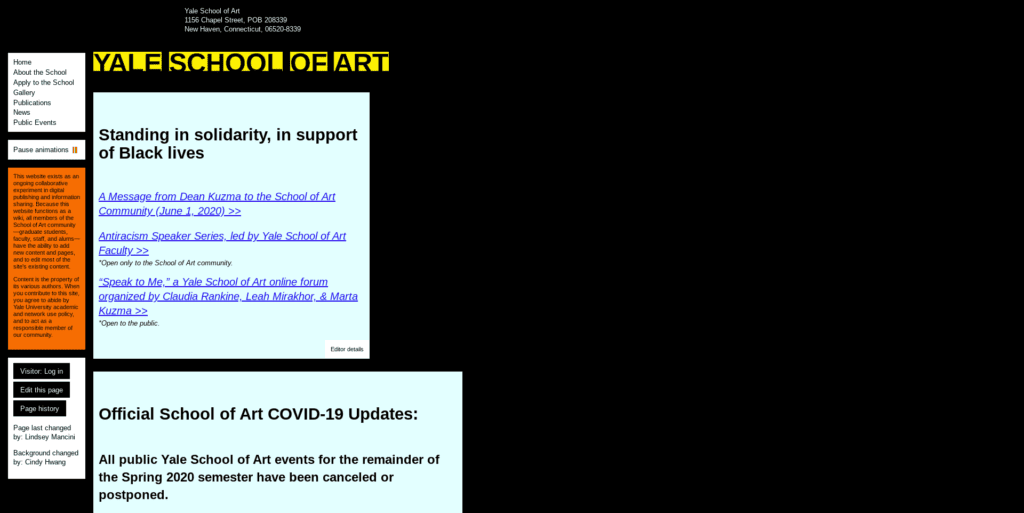
The best art school in the country should have a better website to promote the school. This website should be geared towards prospective students and parents while providing information that current students need.
Let’s break down some of the changes we would make.
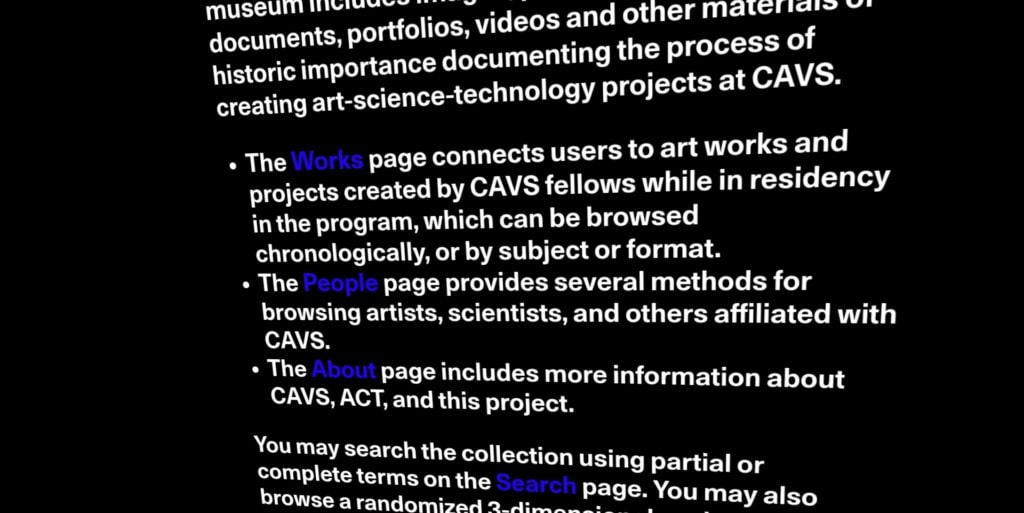
Another renowned institute of higher learning that has neglected the basics of good web design. There’s a lot that needs to be changed but let’s take a look at a few of the glaring things that need to be fixed.
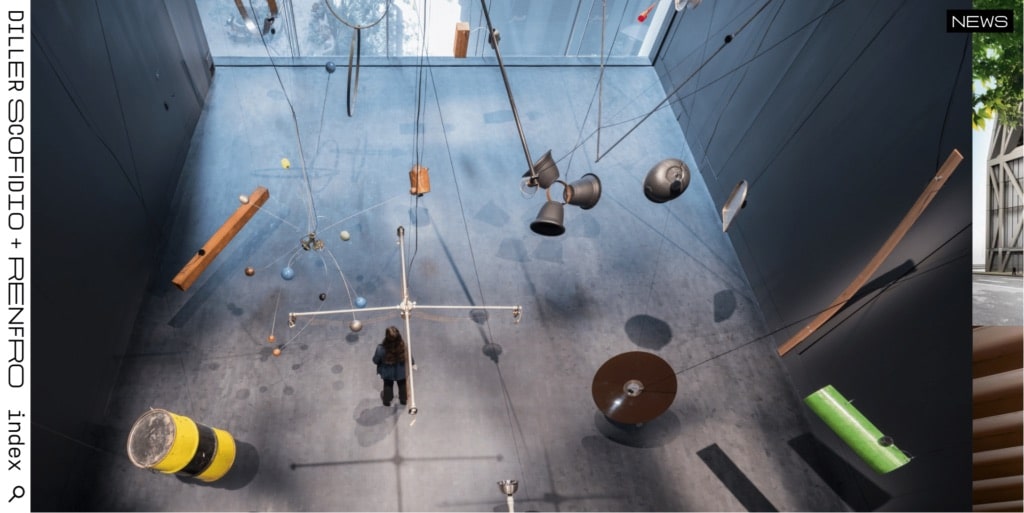
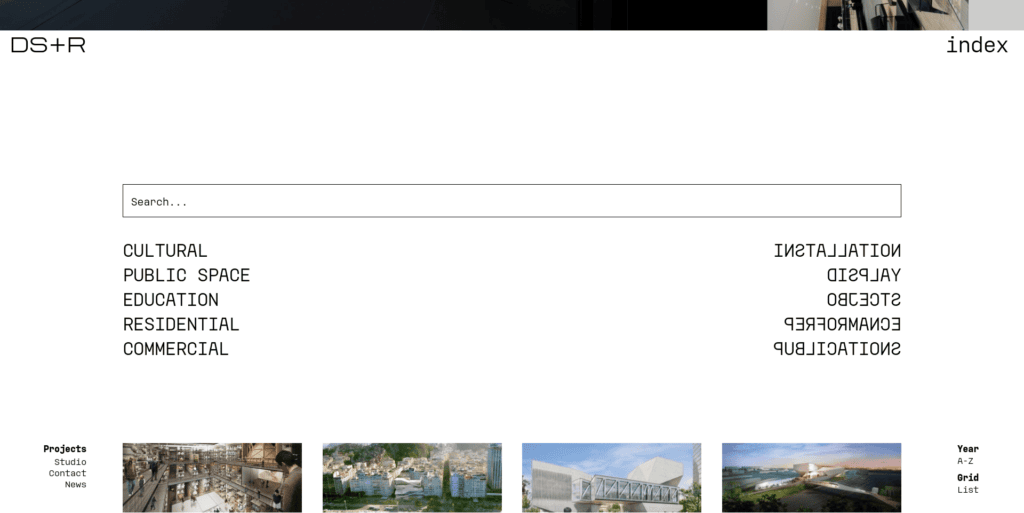
When you launch your business website, you want to make sure your visitors know what it is you’re offering them. This website...does not do that.
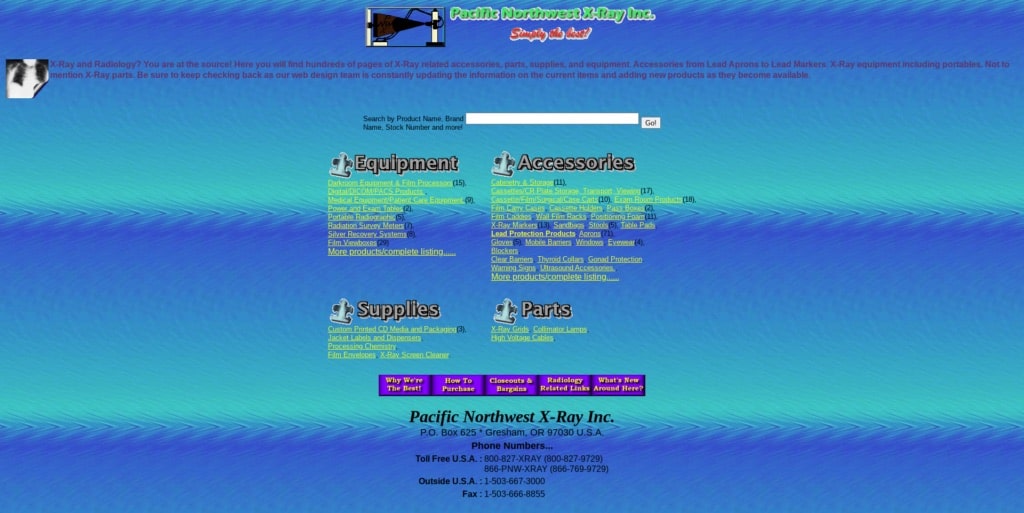
You have to really know what you need if you find yourself at Pacific Northwest X-Ray. They are a one-stop-shop for medical providers who need anything for their x-ray machines. But this website is hard to navigate for even the most knowledgeable x-ray tech. So what would we fix first?
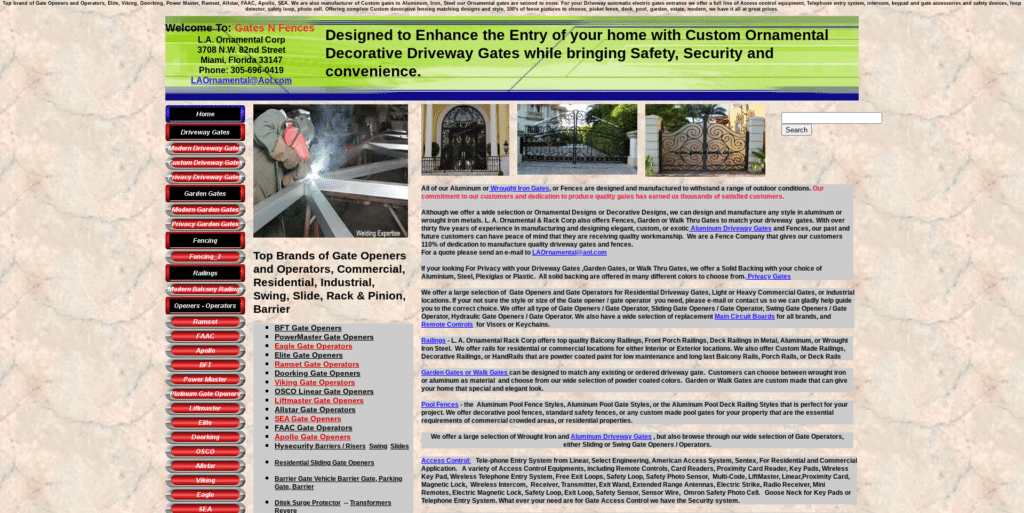
People love to use local businesses for home projects like installing gates and fences. Unfortunately for Gates n’ Fences, residents in their area are likely to look elsewhere if their first exposure to this business is their website. We would recommend the following first steps to convert website visitors into customers.
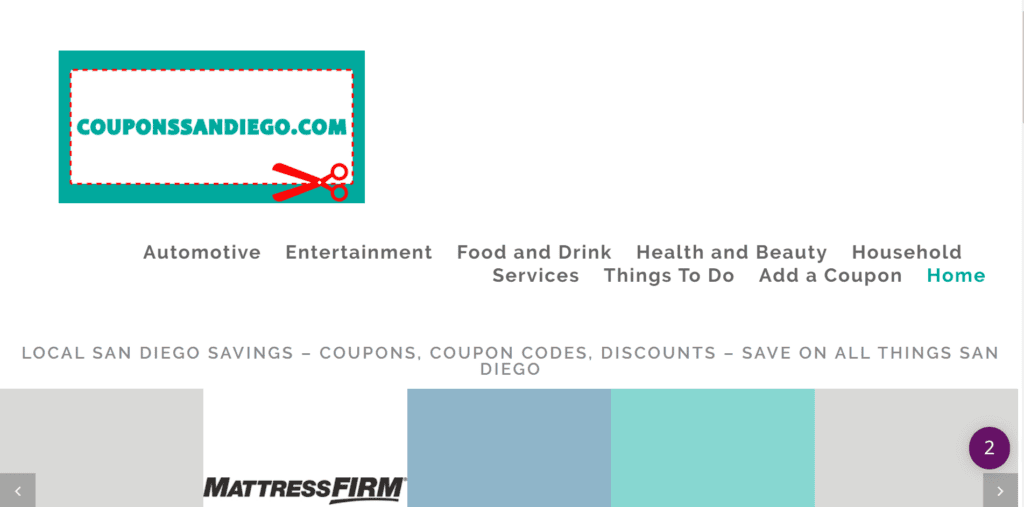
At first glance, this site isn’t terrible. Sure it looks like it was thrown up quickly and cheaply but it’s not offensive. And then you start to scroll. That’s where our list of what to fix starts.
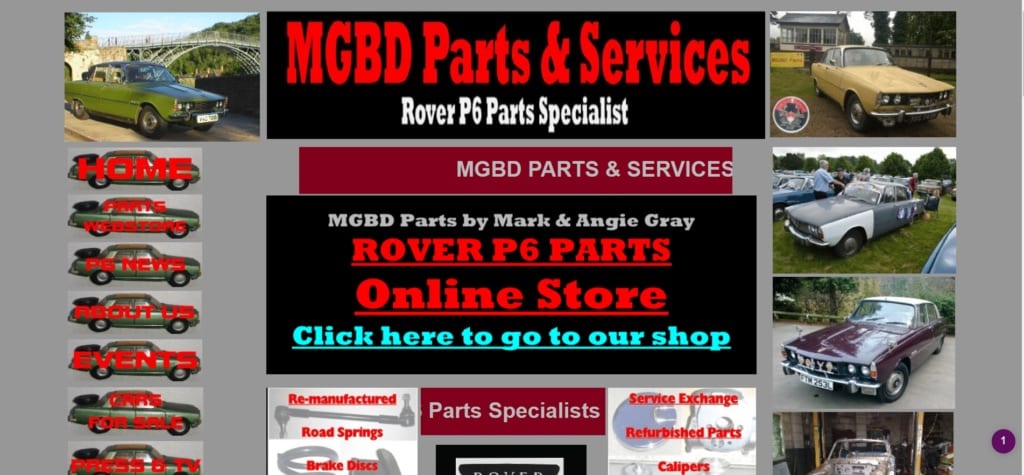
This website can be summed up in two words: Too Busy. We get that you provide car parts for Rover P6 cars. There's a way to convey that without a billion pictures of the car.
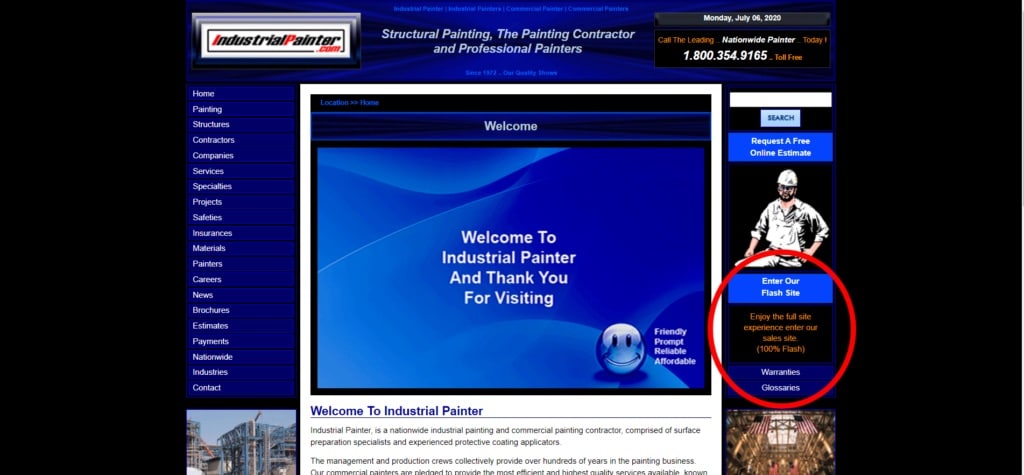
We’re just going to jump right into the bad here because it is just appalling.
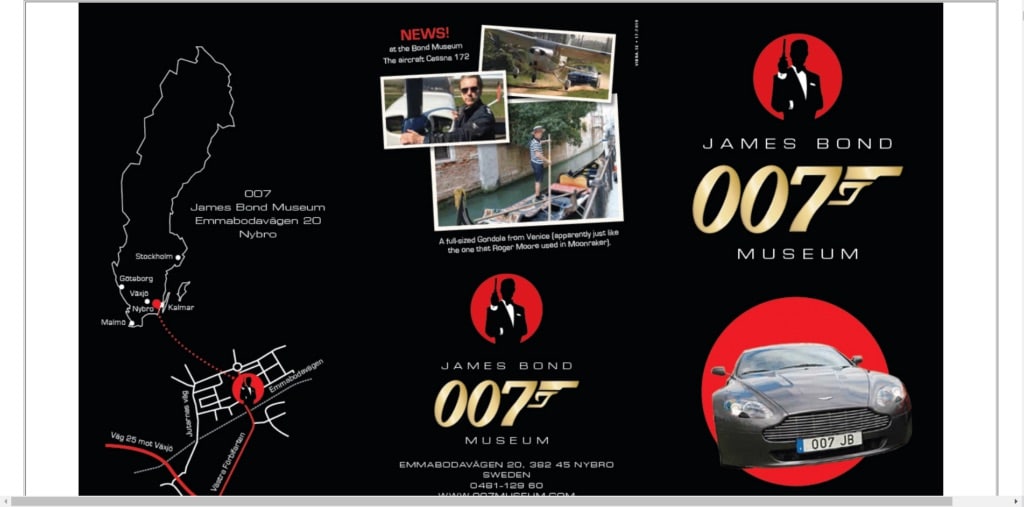
James Bond is cool. He’s debonair. He’s easy on the eyes. The website for his fan museum is none of those things.
Arngren.net is a Norweigen classifieds website. Most people are used to classified websites having at least a semblance of organization, even if the web design isn’t what we would call “attractive.” (See: Craig’s List.) Argren.net has decided to go another direction.
Want to build something beautiful? We are a Seattle website design agency taking on new clients.
Good web design can make all the difference in the world to your business. You have no more than 30 seconds to impress your website visitors before they leave your site if they don’t like what they see. Design plays a big part in that decision. Let us help you impress your website visitors with the design of your page so they stick around to be impressed by your business.
—